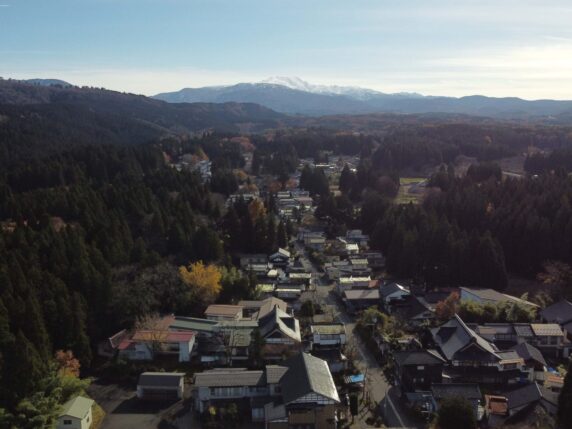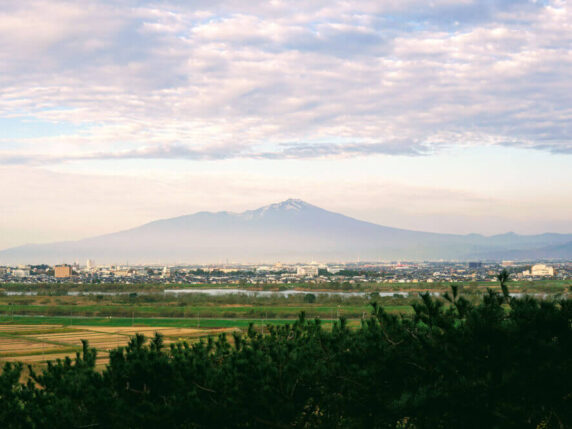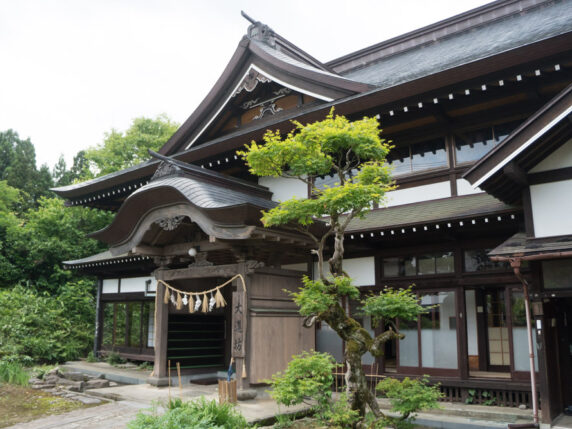Autumn on the Dewa Sanzan
Written by Timothy Bunting
Autumn on the Dewa Sanzan
“There are days that are clearly summer days, and then there are days that are clearly autumn days. However, we never say ‘today is summer, and tomorrow is autumn’.”
Master Hoshino of Daishobo Pilgrim Lodge on Mt. Haguro
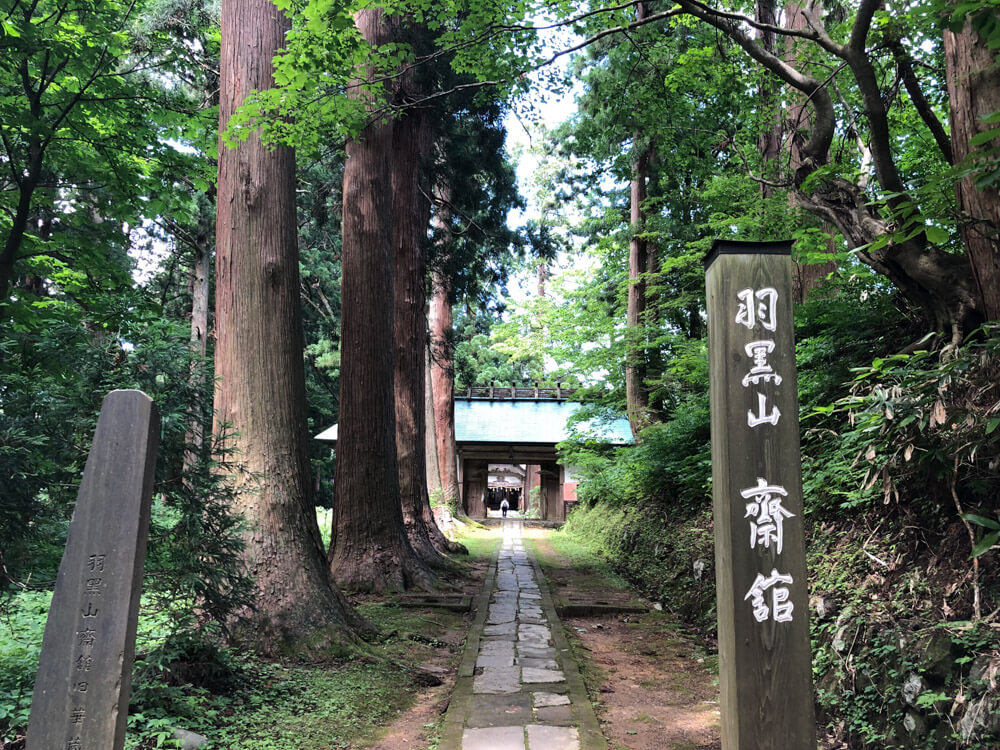
Master Hoshino of Daishobo Pilgrim Lodge is famous for saying that the vagueness of Japan is one of its greatest strengths. Not having to do something in a set way means that you are better able to take on elements of other people, add your own touch, and make it your own. Nichiren Buddhism, for example, is a kind of Buddhism unique to Japan. Or, for a more modern example, the Just In Time inventory system was adopted from practices outside Japan that led to dramatic increases in efficiency, and dramatic increases in profits for Toyota from the 1970s onwards.
Well, Master Hoshino believes that this vagueness in the Japanese character comes from the seasons in Japan being so distinct, yet without an distinct point at which they change. Autumn in Japan is perhaps best characterised by the brilliant patchwork the maple, beech, and oak trees changing that wraps around the surrounding landscape. And if you’re in Japan for the Autumn, you’re going to want to be outside to witness this marvellous display, and the Dewa Sanzan is a great place in which to do so.
Autumn Rituals for the Dewa Sanzan Yamabushi
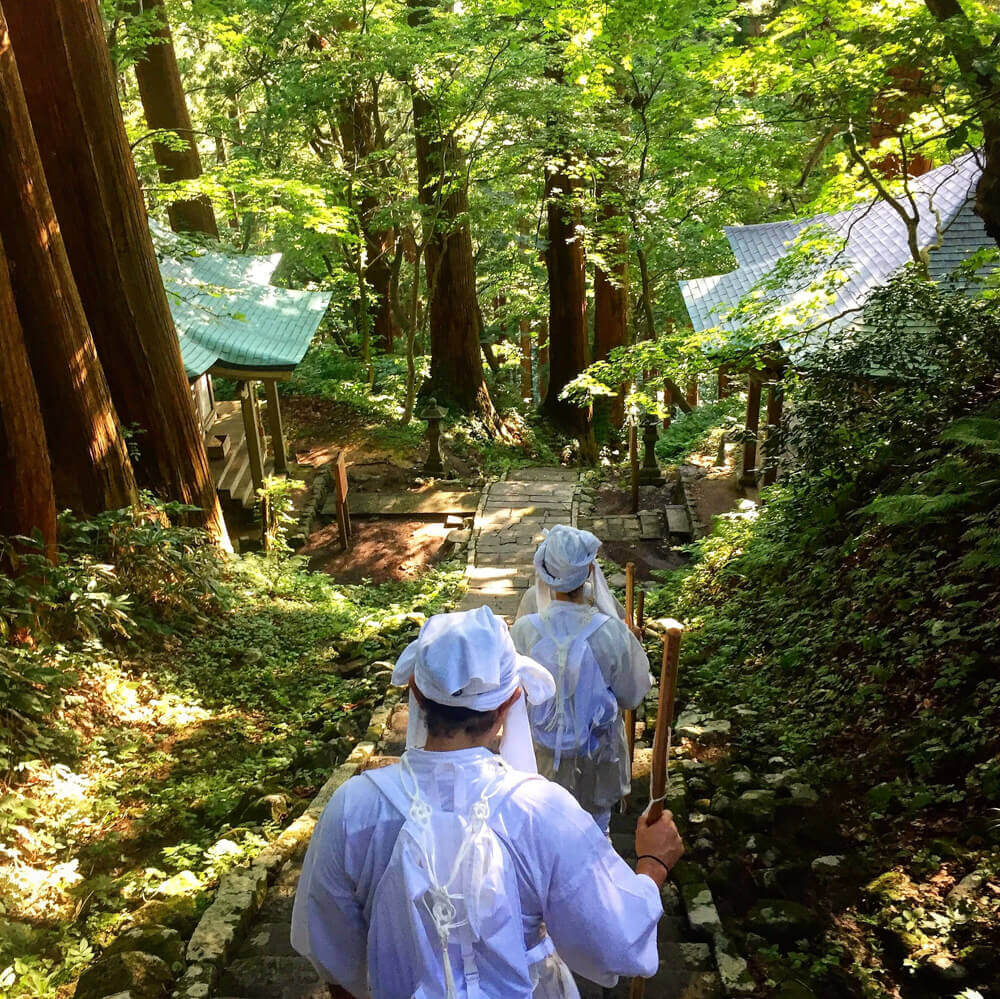
For the Dewa Sanzan Yamabushi (mountain monks or ascetics), Autumn is time for one of the most important rituals of the year: The Akinomine Autumn Peak Rituals where budding Yamabushi are initiated into the fold. The Autumn Peak rituals are said to have continued for over 1,000 years on the Dewa Sanzan, originally taking up to 75 days, however these days the trainings have been whittled down to a weeklong affair due to modern-day schedules.
There are currently two types of Akinomine Autumn Peak Rituals on the Dewa Sanzan; the original hosted by the Buddhists, and the newer version hosted by the Shinto Dewa Sanzan Shrine. During the Meiji Restoration in the 1860s, the Japanese government upheld state Shintoism as the true religion of Japan, and tried to expel Buddhism as it was seen to have come from the outside. Up until then, the Buddhist Akinomine took place each year, but the Yamabushi were forced to stop, or take the trainings underground.
LEARN MORE: Religion on the Dewa Sanzan
The Origin of Shinto Yamabushi
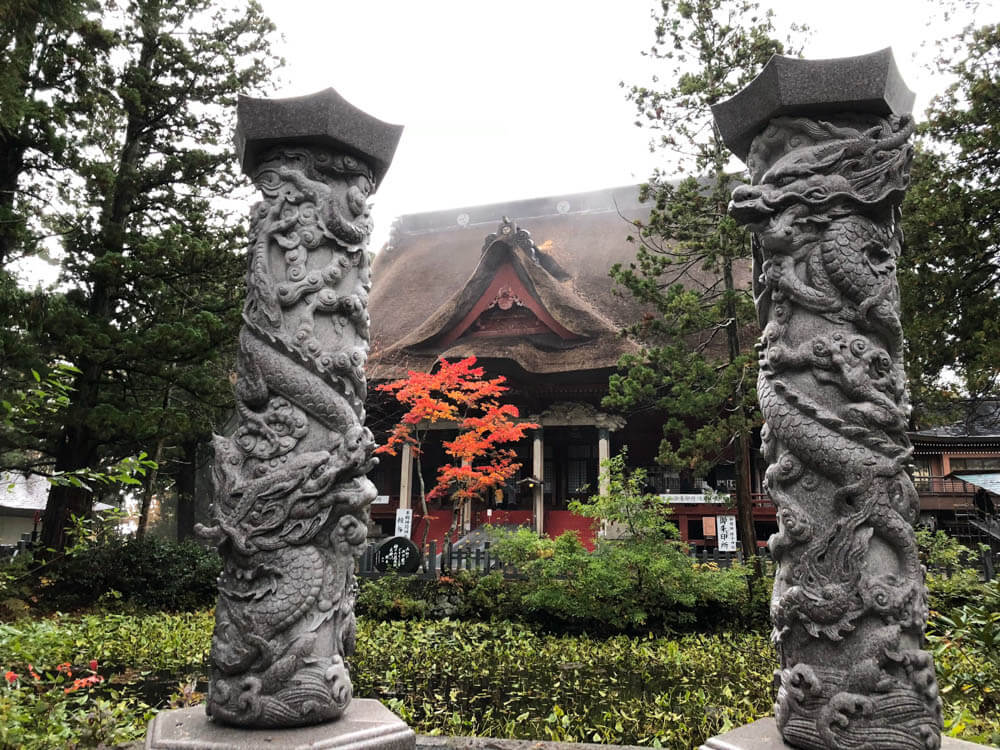
Understanding the importance of the ritual in protecting the health and safety of the region, the people of Shonai petitioned the newly-formed Dewa Sanzan Shrine to reinstate the Autumn Peak Ritual. This was the impetus for Shinto-style Yamabushi trainings on the Dewa Sanzan. Then after WWII when the freedom to practice any religion in Japan was reinstated, and the Buddhist Yamabushi restarted the Autumn Peak Ritual alongside their Shinto equivalents. Both of these rituals are secretive in their nature, only those who participate are to know what goes on, but it is allowed to say that the rituals are based off the Ten Realms of Buddhism.
Akinomine: The Autumn Peak Rituals
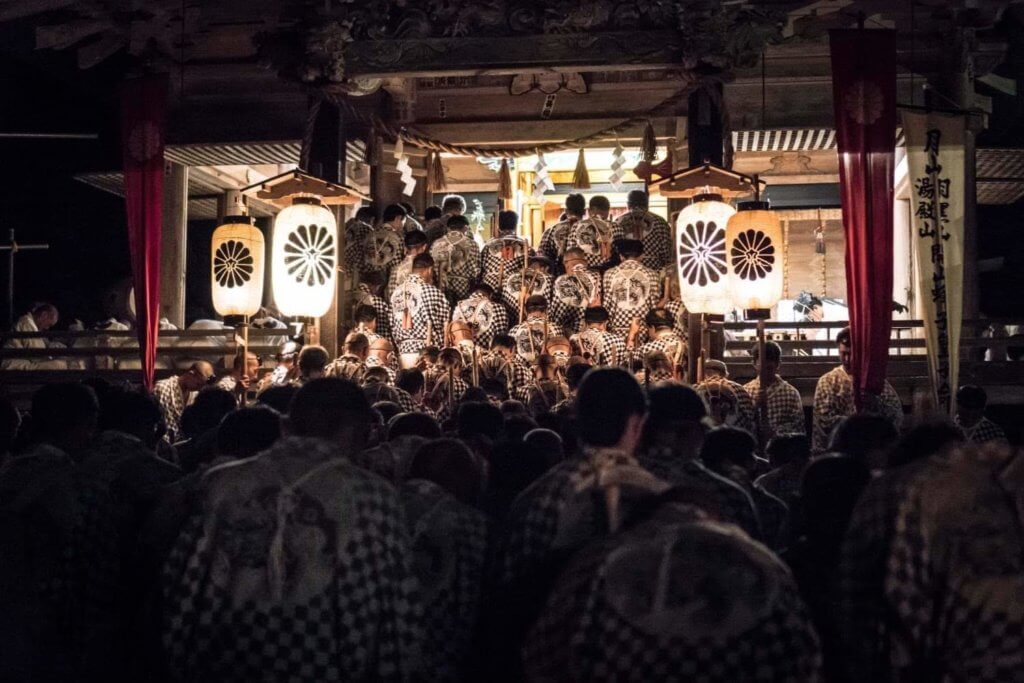
The Buddhist Autumn Peak Ritual takes place at Shozenin Koganedo and Kotakuji Temples beginning on August 25th and finishes on the 31st. Members of the public can see Yamabushi on each respective day on Mt. Haguro as they enter and then leave the mountains.
The Shinto Autumn Peak Ritual starts one day later, beginning August 26th, and ending September 1st. Conches blearing, and with jovial voices, during the Shinto Autumn Peak Ritual more than 150 Yamabushi parade the stone steps of Mt. Haguro, a must-see for any visitor to the Dewa Sanzan. We also highly recommend checking out the Hassaku Festival held at Hachiko Shrine by these Yamabushi on top of Mt. Haguro on the night of the 31st, one of the big three festivals of the Dewa Sanzan calendar (the other two being the Flower Festival in July, and the Shoreisai Festival on New Year’s Eve).
Fuyunomine: The Winter Peak Ritual
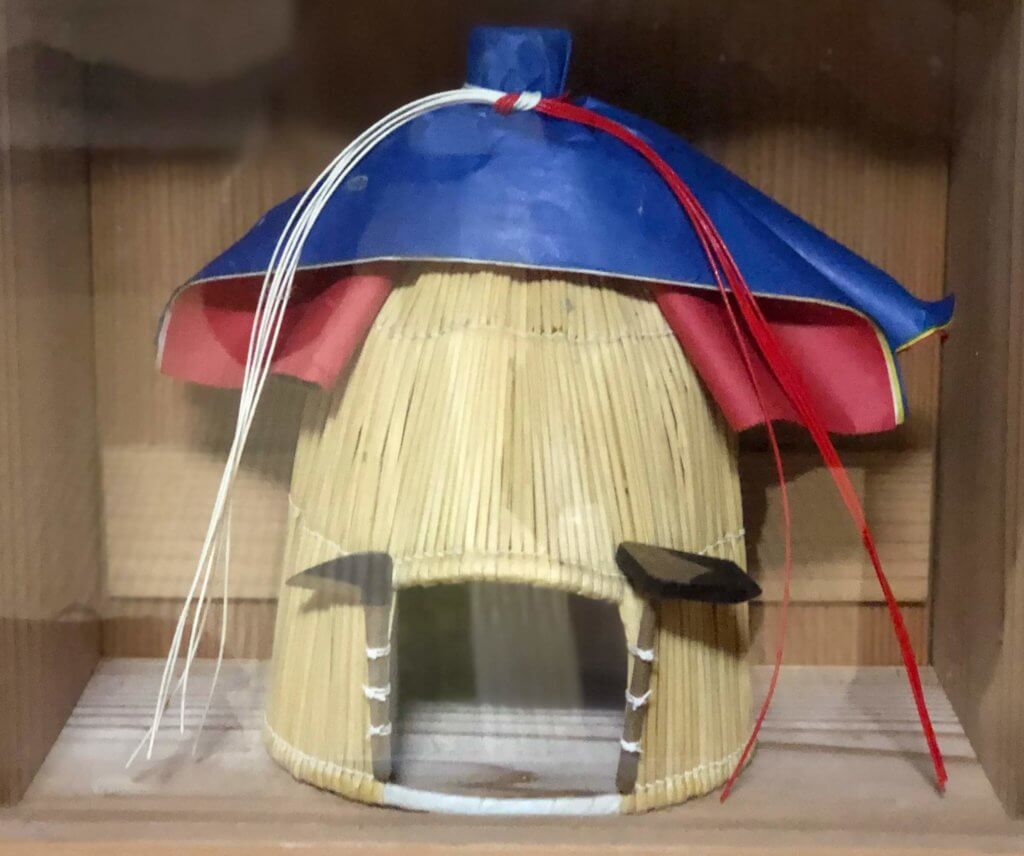
Similarly, the toughest of the Dewa Sanzan Peak Rituals begins in September each year. From the 24th of September, two senior Yamabushi, named Matsuhijiri, begin the 100-day Fuyunomine Winter Peak Ritual that concludes with the Shoreisai Festival on New Year’s Eve. The Matsuhijiri spend 50 days in their own homes, and 50 days at Saikan at the top of Mt. Haguro, but spend a lot of their time praying to the shrines in the vicinity. If you’re lucky, you might be able to catch a glimpse of them.
Take a Hike: Autumn Hiking on the Dewa Sanzan
Not only is the weather cooler, there are less bugs out than in summer, and the leaves are out in full colour making autumn an excellent time to hike the Dewa Sanzan.
Momijigari: Autumn Leaf Hunting
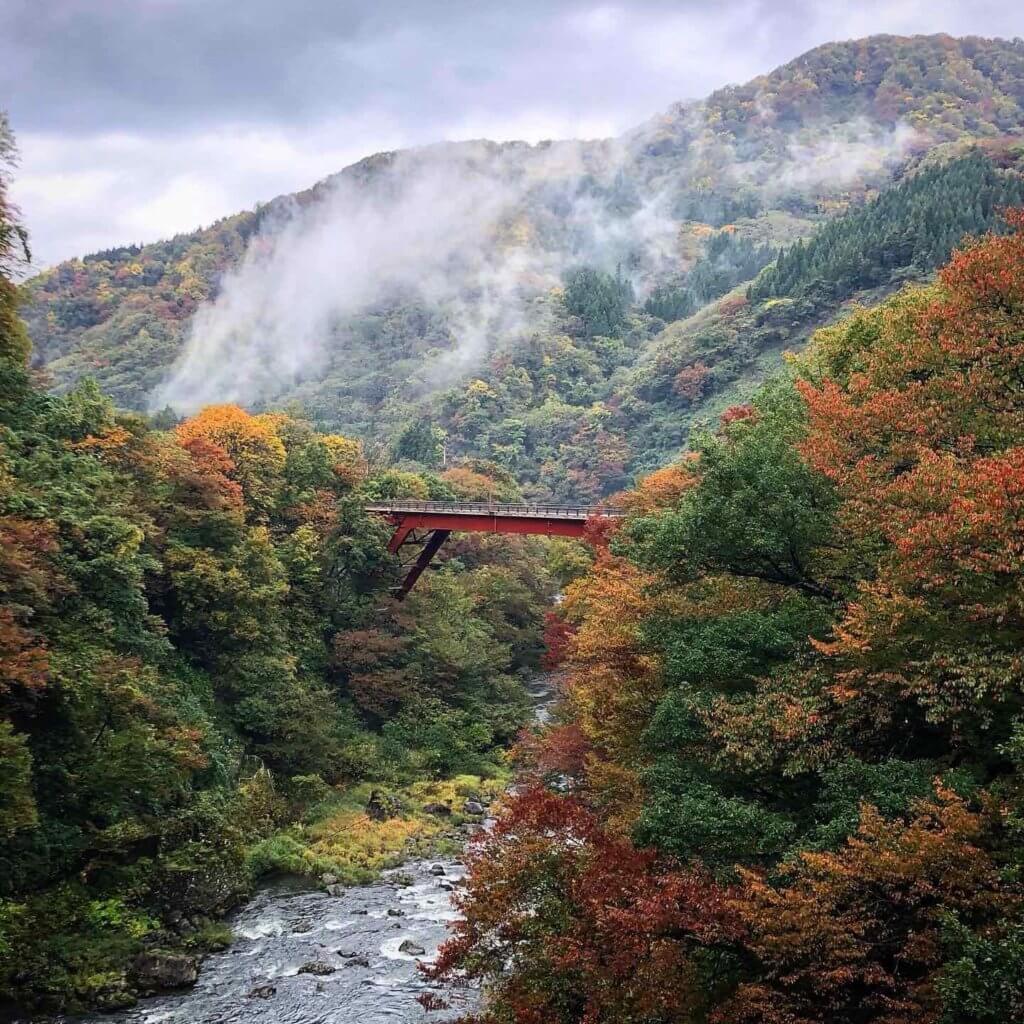
One favourite autumn pastime of Japanese outdoor lovers is Momijigari, literally autumn leaf hunting. Similar to Hanami Flower Viewingin spring, Momijigari is the simple act of enjoying the presence of the changing autumn leaves. Basically, people go out to enjoy the autumn leaves, maybe take some photos, or collect a few leaves for keeping. It’s not unusual to see people taking leaves and then laminating them to use as bookmarks or postcards either.
The word for autumn leaves, Momijigari, is made up of two words; Momiji, meaning the changing foliage, and kari, meaning to hunt. Technically, the Kanji for Momiji is ‘crimson leaves’, and is also pronounced ‘Koyo’. But, why use the term for ‘hunting’? Well, legend has it nobles from the past didn’t hunt animals, so they would ‘hunt’ for autumn leaves. Momijigari developed amongst nobles in the Heian Period (794 to 1185) around the then capital, Nara. Then, in the 17th century commoners also began taking part, turning it into a national pastime.
Mt. Gassan in Autumn
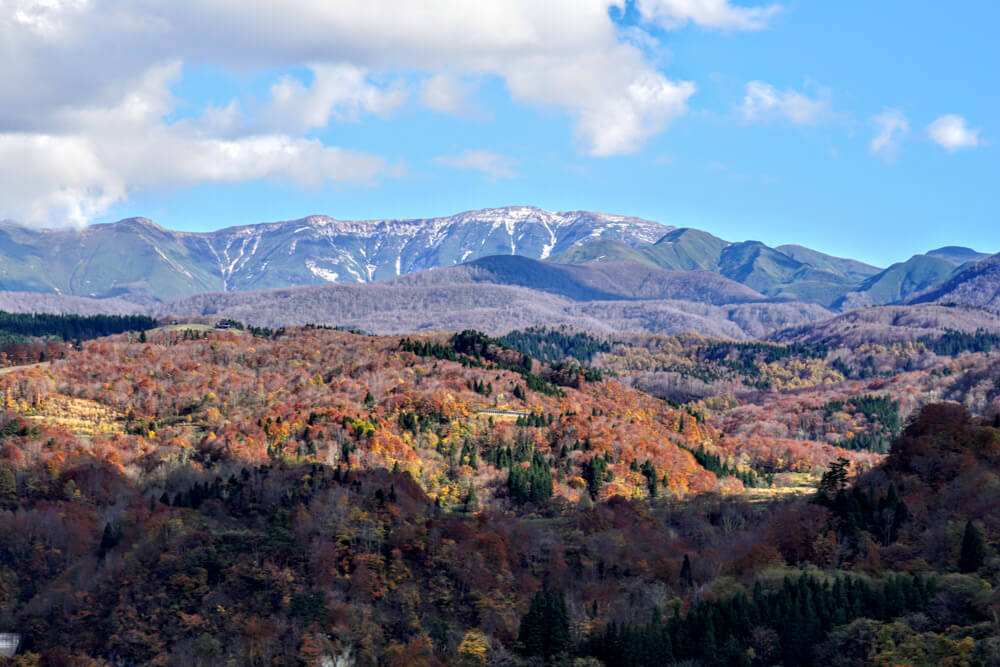
Although the climbing season of the tallest of the Dewa Sanzan peaks is very short owing to snowfall, Mt. Gassan is still one of the most popular mountains to climb in Japan due to the sheer beauty of the leaves in autumn. To make the most of the leaves, we recommend coming sometime between mid-September, and mid-October. Any earlier, and the leaves may not have changed yet. Any later, and you risk being snowed on.
Especially beautiful are the Midagahara marshlands near the 8th Station of Mt. Gassan, where you will find a number of rare flowers only occuring there in the autumn that are reflected in the numerous ponds. However, while the route from the 8th station up to the top, and then back down to Mt. Yudono is a great hike, you may also want to take advantage of the extra height, and extra time, of the ski lift from Gassan Ski Resort at Shizu Onsen. Once you get above a certain altitude, around 1800m, the trees make way for low-lying shrubs, so it’s not necessary to climb to the top to take in the leaves on offer.
Hijiori Onsen
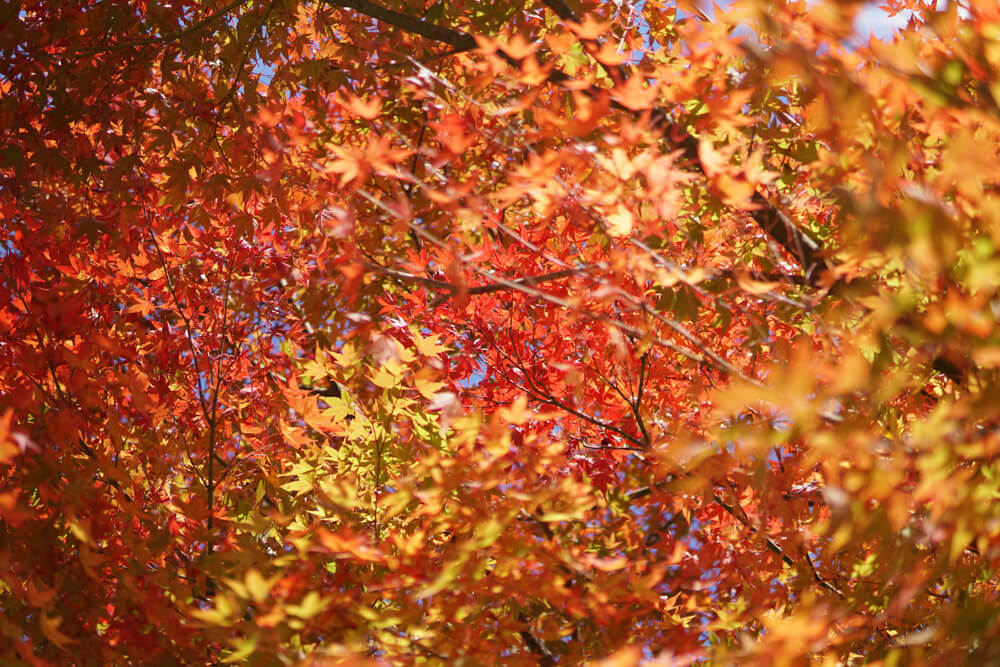
To the east of Mt. Gassan lies the quaint hot spring town of Hijiori Onsen, another great location for taking in the autumn leaves, but also a great place to simply relax in the hot pools. Hijiori Onsen is located in a caldera that formed millions of years ago and is famous for having the heaviest snowfall in Japan, so you’re going to want to get in there before the snow starts falling in earnest. When there, be sure to hit up Jizokura, a tiny hut on the side of a cliff with expansive views over Mt. Gassan and the surrounding mountains. As with the main paths up Mt. Gassan, we’d recommend visiting Hijiori by the end of October at the latest.
Mt. Yudono in Autumn
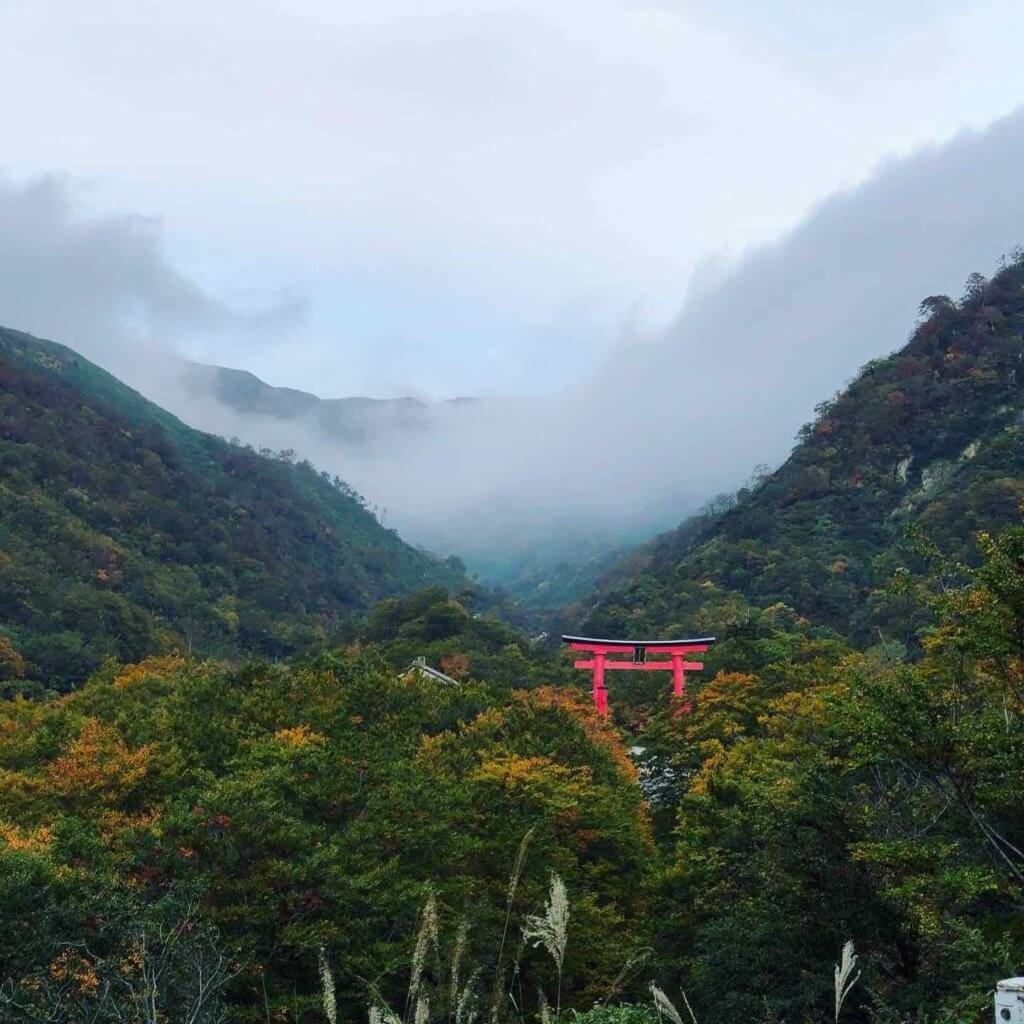
Speaking of Mt. Yudono, its location in a small gorge gives 360 degree views of the autumn leaves and the striking red of the giant Torii gates creates a beautiful background. For the autumn on Mt. Yudono, you’re going to want to get there between mid-September and the first week of November when the shrine closes, and before most of the leaves have fallen.
To make the most of autumn on Mt. Yudono, we’d recommend climbing to the top of Mt. Gassan from there. However, for those pressed for time, or ill-prepared for an alpine hike, we recommend a brisk walk on the path from the carpark to the main shrine that takes you over bridges, past waterfalls and small shrines that is quite relaxing with the cool autumn breeze. This will also give you ample opportunity for some Momijigari, Autumn Leaf Hunting, and is good for capturing wonderful photos too.
Mt. Haguro in Autumn
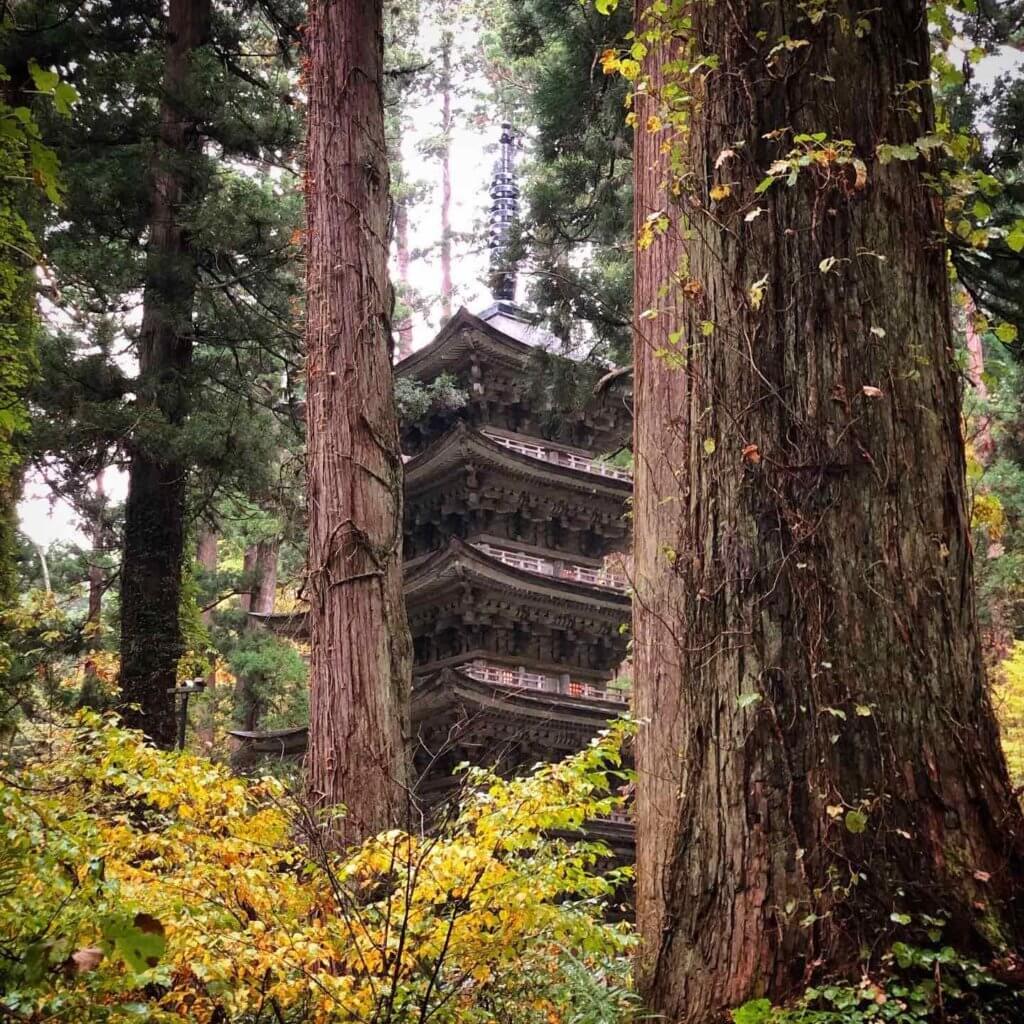
Hiking the stone stairway of Mt. Haguro is always an excellent option and autumn is no exception. Although the stone stairway is surrounded with cedar, an evergreen tree, there are still many deciduous trees displaying the distinct colours of autumn. In fact, there is a variety of beech tree on Mt. Haguro that doesn’t usually occur at such low altitudes. This is because Mt. Haguro was formed by the eruption of Mt. Gassan, where these trees originated.
As mentioned, a walk up the stone steps of Mt. Haguro is always a great option, but probably the best spot for the autumn leaves is at the top. This area is covered in deciduous trees that contrast greatly against Dewa Sanzan Shrine and the surrounding buildings, especially the stark red of Reisaiden towards the back. Either way, if you’re near the Dewa Sanzan in autumn, we suggest you take a hike!
Some visitors to the Dewa Sanzan opt to take Old Haguro Road, the path that famed Haiku poet Matsuo Basho took while compiling The Narrow Road to the Deep North in the 17th century. Contact us if you need help walking this route as it normally requires a guide.
Gyokusenji Temple
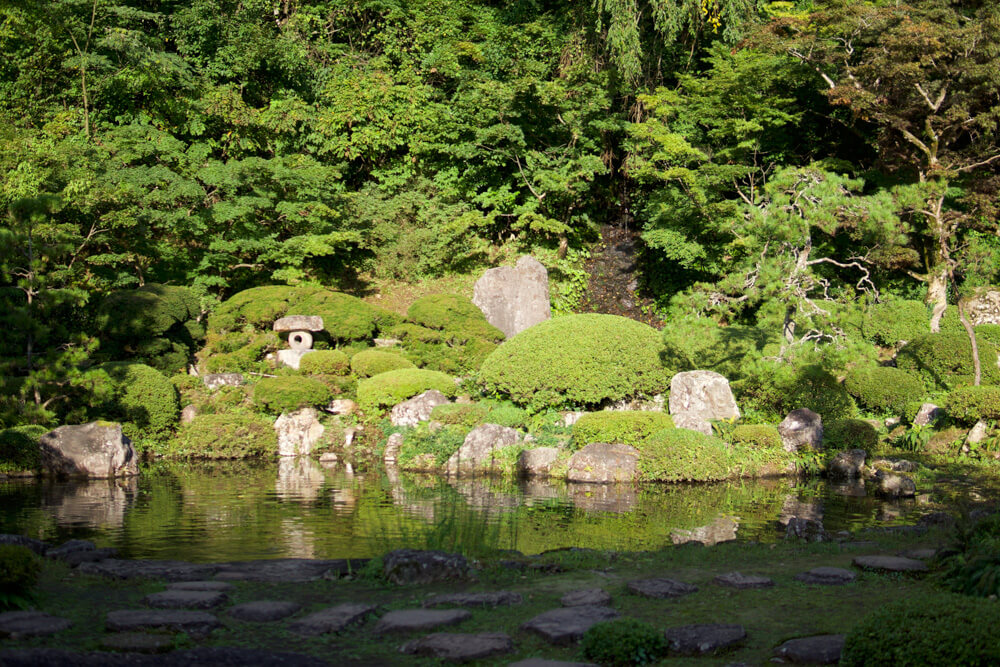
Another great way to embrace autumn on the Dewa Sanzan is by paying a visit to Gyokusenji Temple at the base of Mt. Haguro. Also known as the flower temple, Gyokusenji is famous for its traditional Japanese garden that has been lovingly upkept since it was first landscaped more than 300 years ago. To help you truly relax, Gyokusenji Temple provides bowls of freshly whisked Matcha Green Tea with an accompanying sweet to savour as you gaze out on the beautifully manicured gardens. Zen meditation and accommodation is also available at Gyokusenji Temple, contact us and we can help organise something for you.
Cruising the Mogami River in Autumn
Lastly, taking a cruise on the Mogami River is always fun, but this is especially so amongst the changing leaves of autumn. The Mogami River is famous as the longest contiguous river in one prefecture, and was pivotal in helping Yamagata develop economically for its role in the rice and safflower trade from the 1600s onwards. Not only that, Matsuo Basho rode the river while composing The Narrow Road to the Deep North and even composed some famous prose there, so you know it is worth visiting. There are a number of cruises that run daily, taking you through the heart of the autumn leaves and leading you straight to Mt. Haguro.
Preparing for Autumn on the Dewa Sanzan
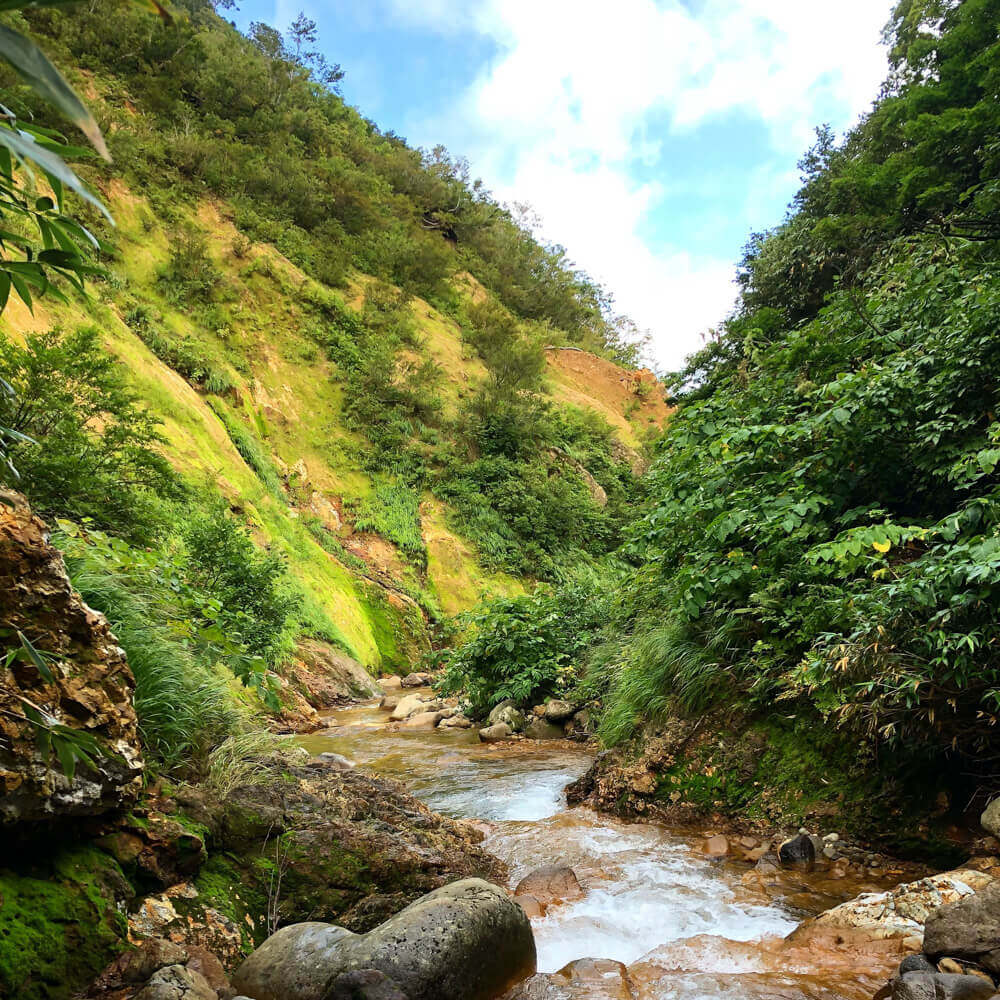
Autumn in Japan is officially between September and November. The leaves on the Dewa Sanzan generally start to change around mid-September, and the trees are usually bald by mid-November.
It is not unusual for the start of September to be as hot as summer, but the temperature generally starts to drop in the middle of the month, so t-shirt and shorts is generally fine if you’re staying in the lower mountains. Mt. Gassan is an alpine environment and can change at the drop of a hat, so packing warm clothing is necessary year-round. However by the end of October, you will need to wear a jacket whenever you go outside.
Autumn Mountain Climbing on the Dewa Sanzan
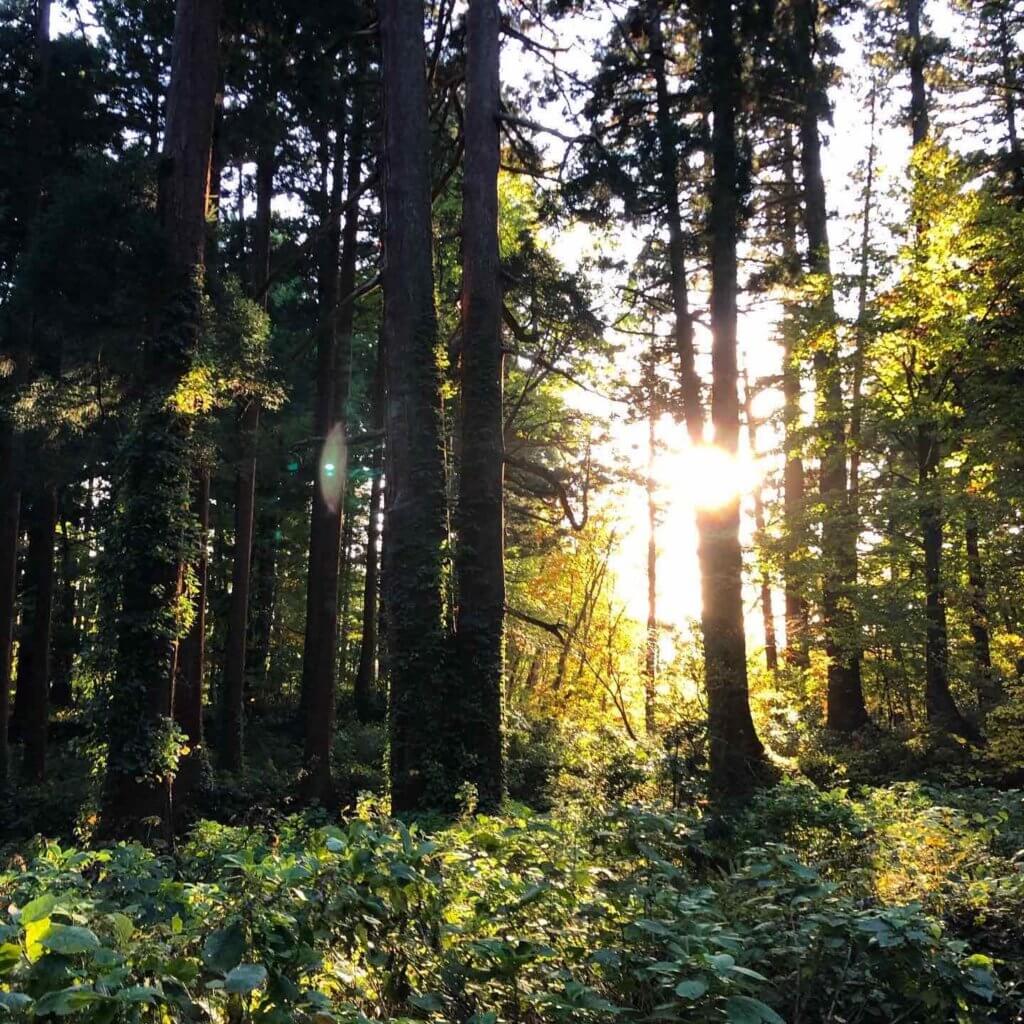
Note that Mt. Gassan’s shrine generally closes on October 1st, but the mountain can still be climbed until the first snow falls, usually around early November, or sometimes as early as the end of October. Mt. Yudono shrine generally closes in the first week of November, but Mt. Haguro is open year-round.
For transport, we have a detailed page to help, but you are also welcome to contact us using the form below.
Conclusion
Winter on the Dewa Sanzan means snow, and tons of it, and is a time when Mt. Haguro looks spectacular. Spring on the Dewa Sanzan is rather muted, until the fresh green and mountain vegetables make their arrival. Then summer is a great time for Yamabushi experiences, and exploring the mountains in a sea of green leaves. With the cooler weather, the fact that all three peaks are open, not to mention the colourful leaves, autumn is arguably the best time to hike the Dewa Sanzan.
Gallery of the Dewa Sanzan in autumn
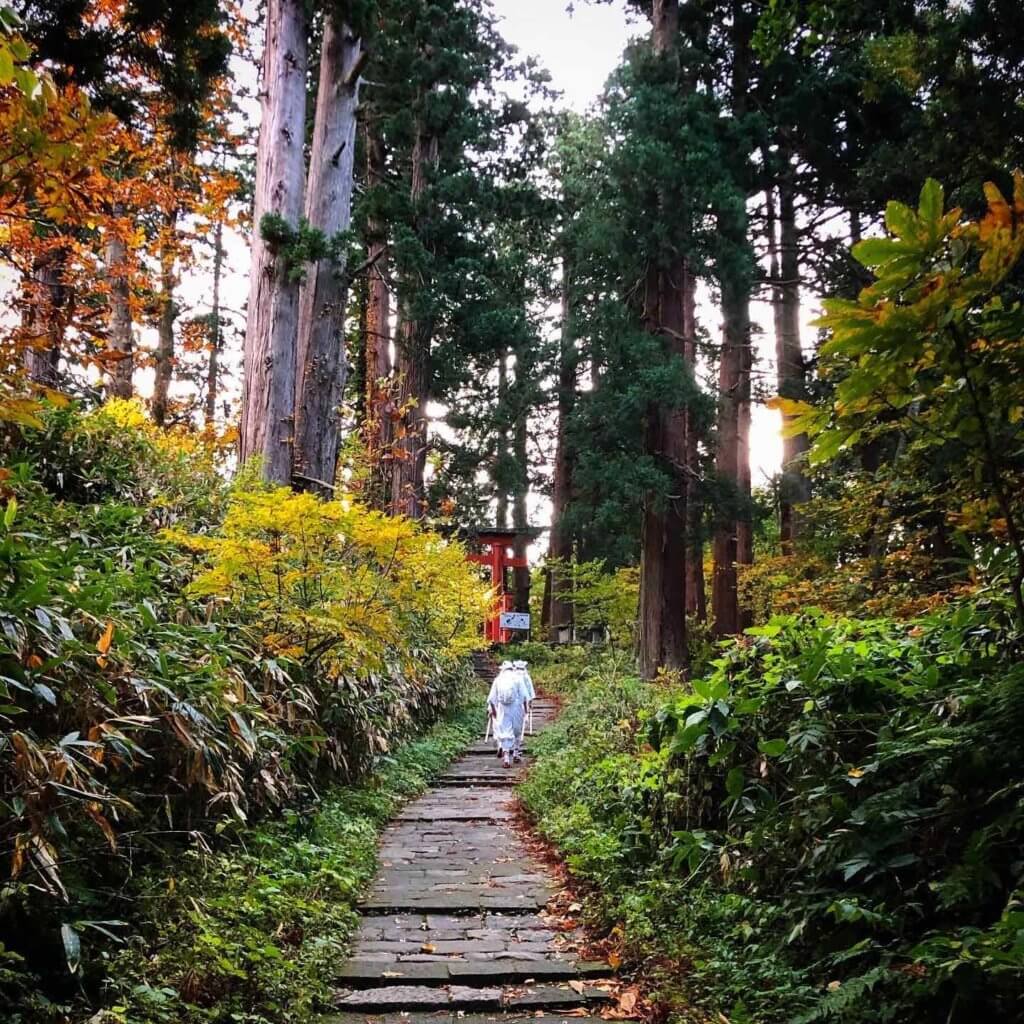
Yamabushi Training on Mt. Haguro 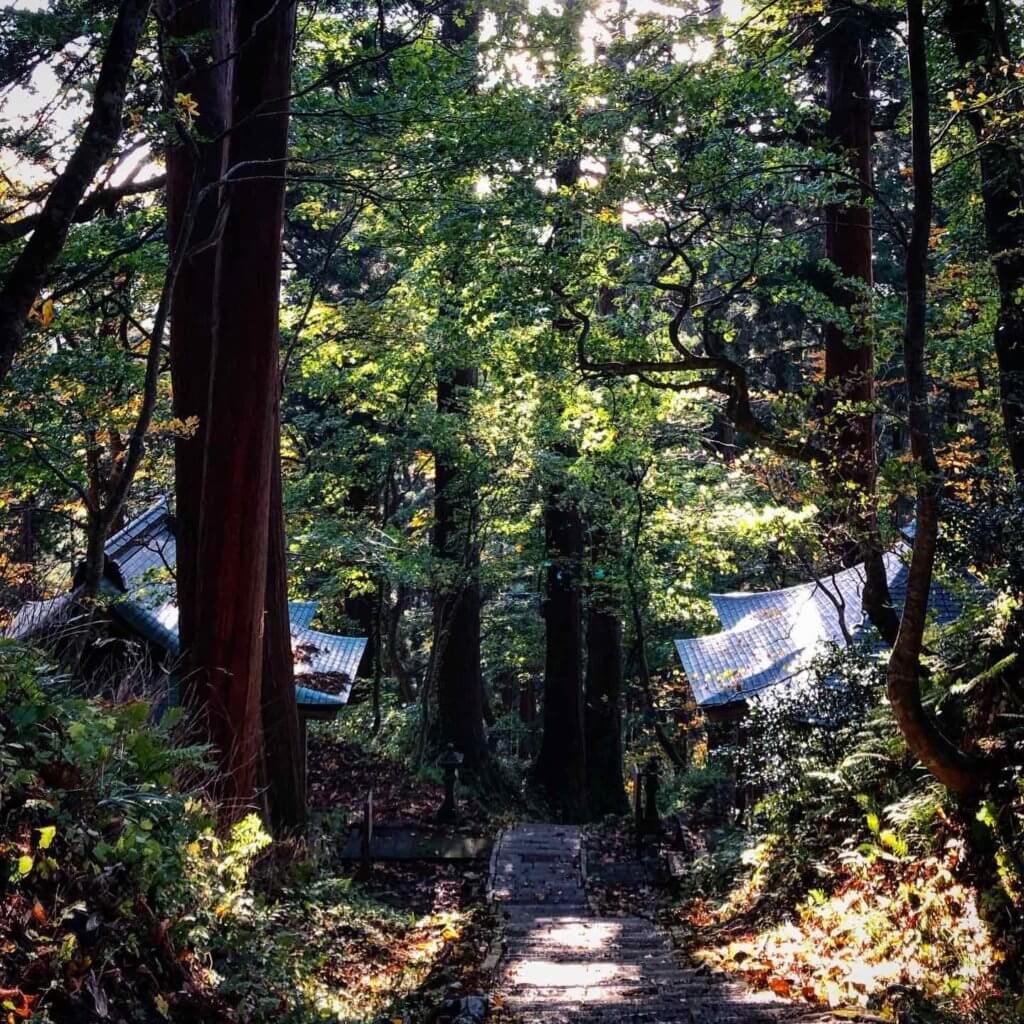
Mt. Haguro of the Dewa Sanzan Blog 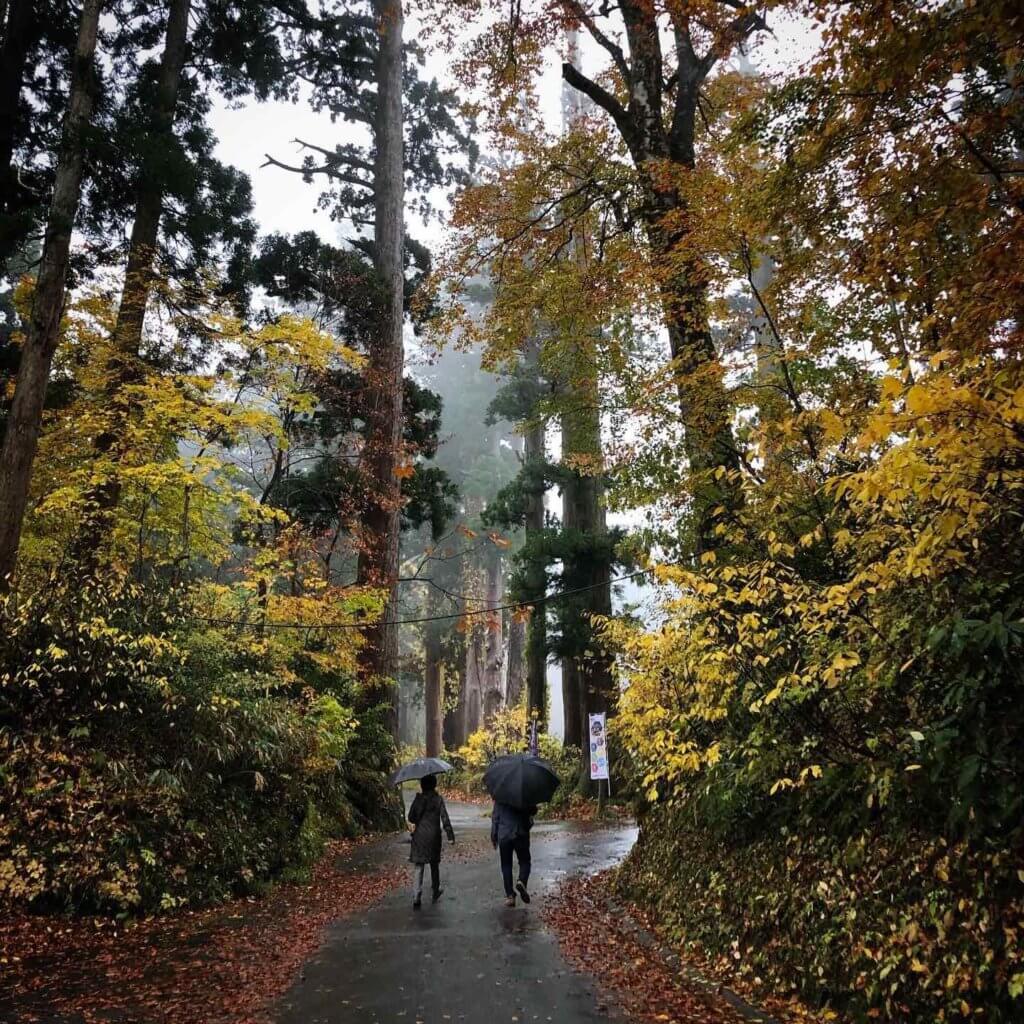
The Cedars of Mt. Haguro in Autumn 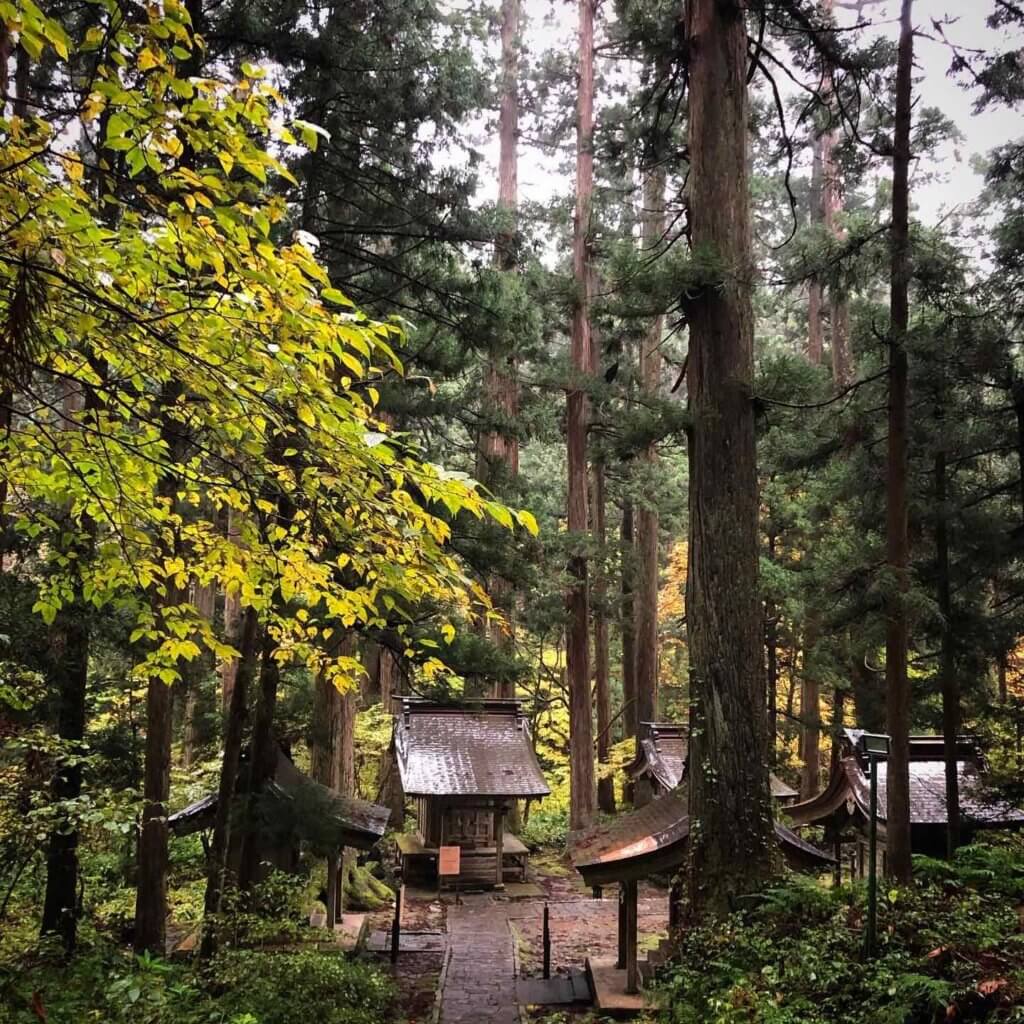
Massha shrines at the base of Mt. Haguro. Before 1868, this area would have been covered in Buddhist artifacts and temples. 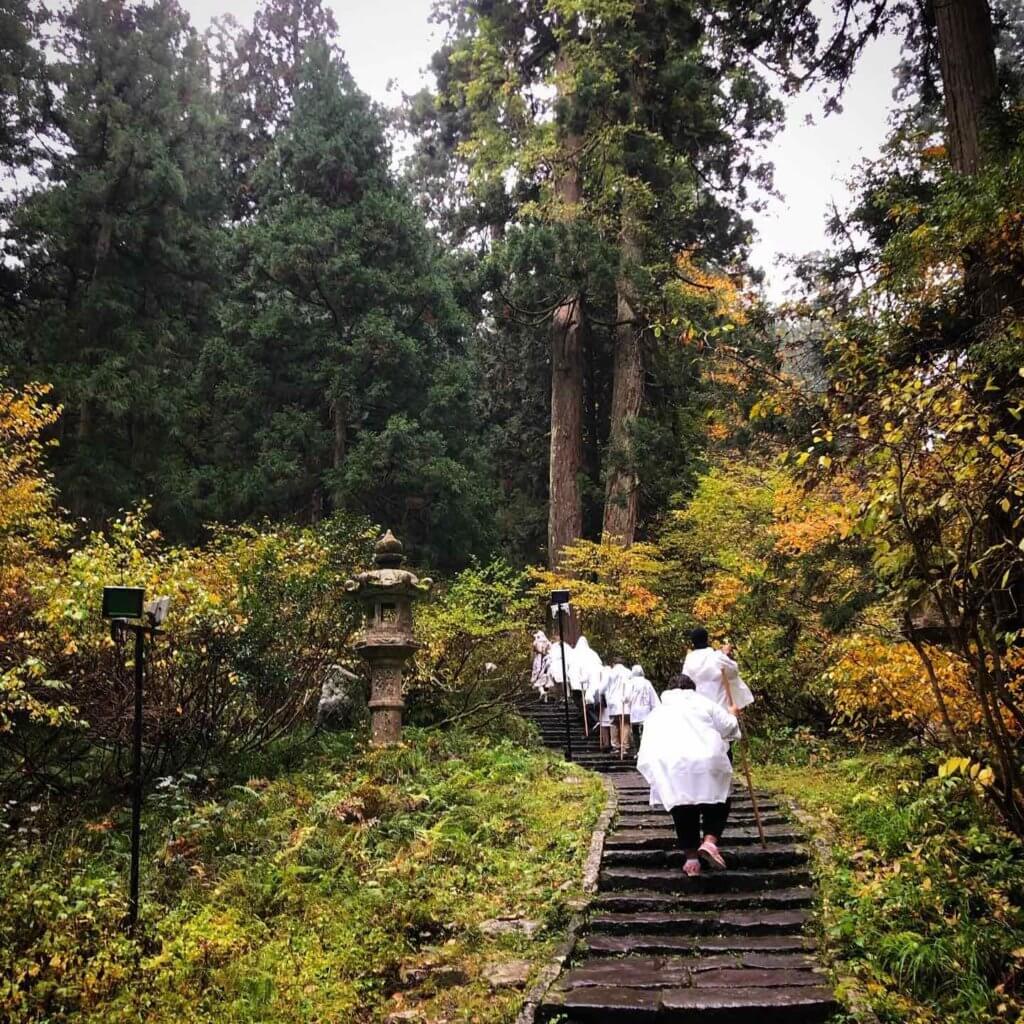
Pilgrimage on Mt. Haguro during autumn 
The Five Story Pagoda of Mt. Haguro of the Dewa Sanzan in the Autumn Leaves 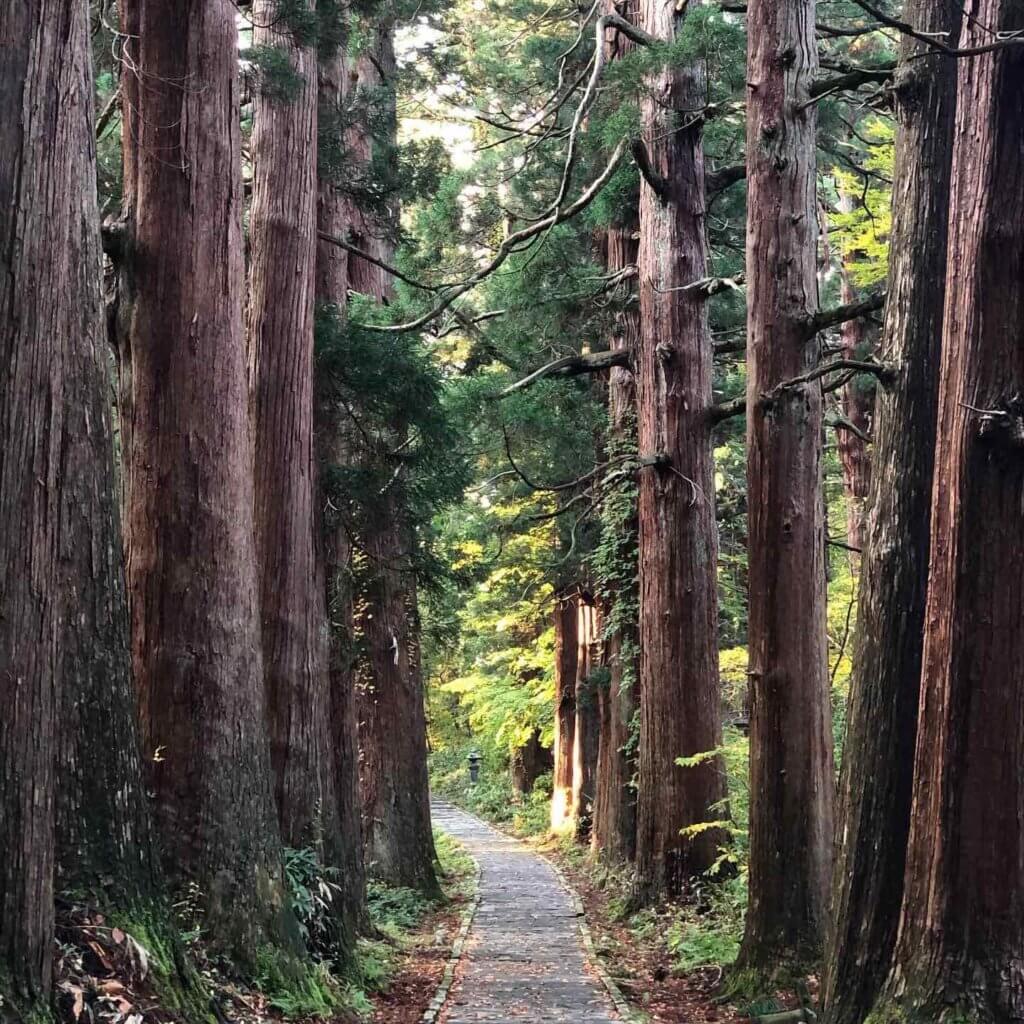
The cedars of Mt. Haguro in autumn. 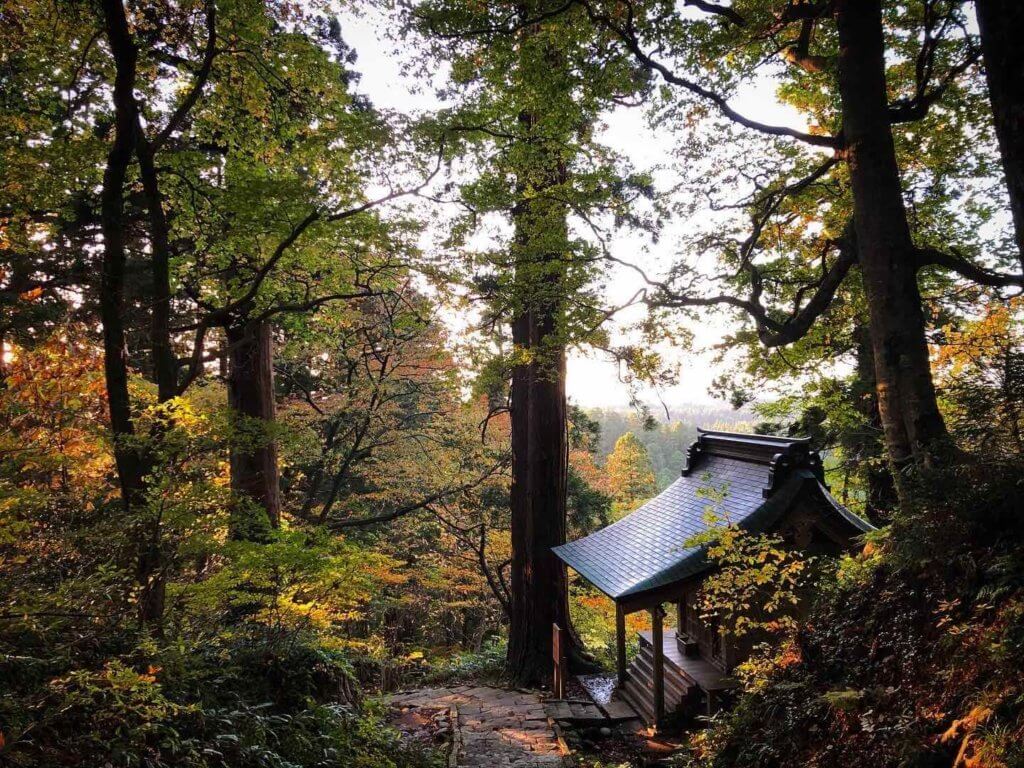
Massha shrine on Mt. Haguro. Before 1868, this area would have been covered in Buddhist artefacts and temples. 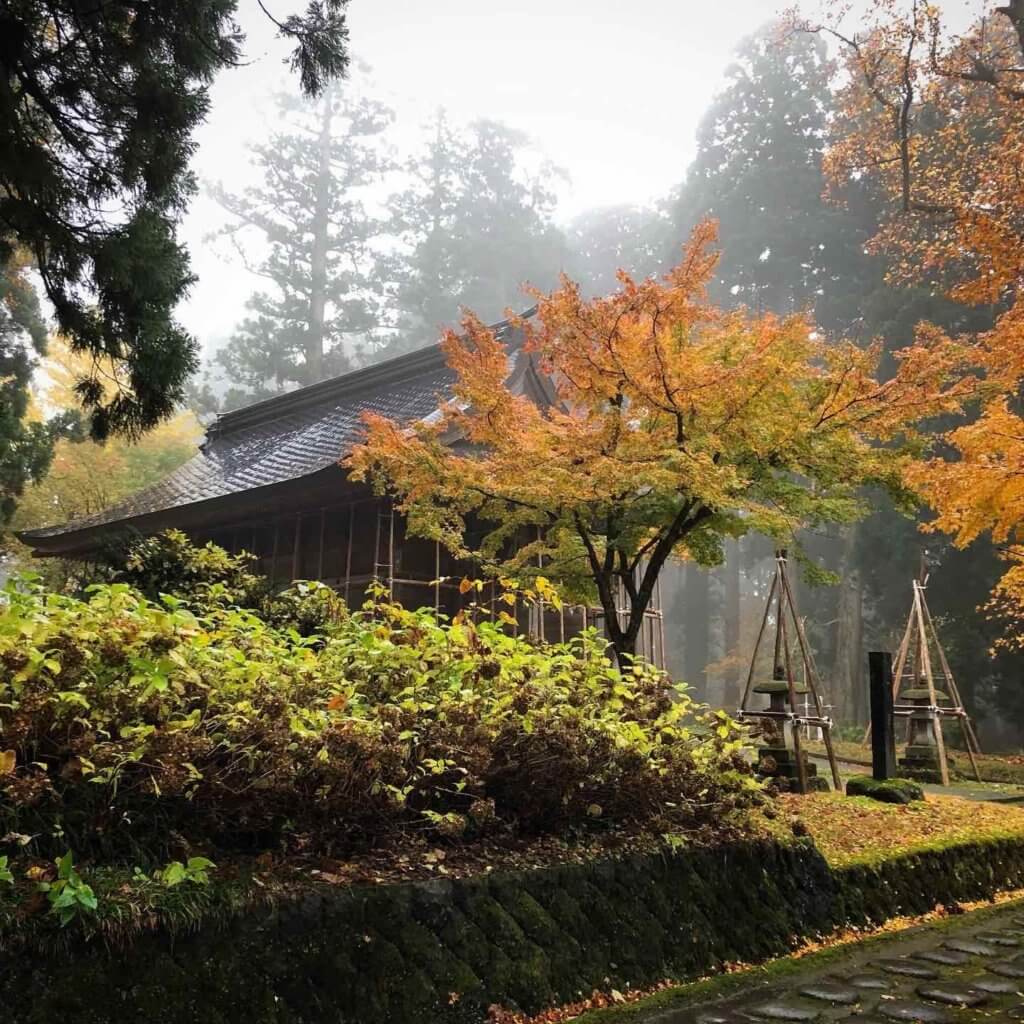
A shrine on Mt. Haguro where the Shoreisai Festival takes place 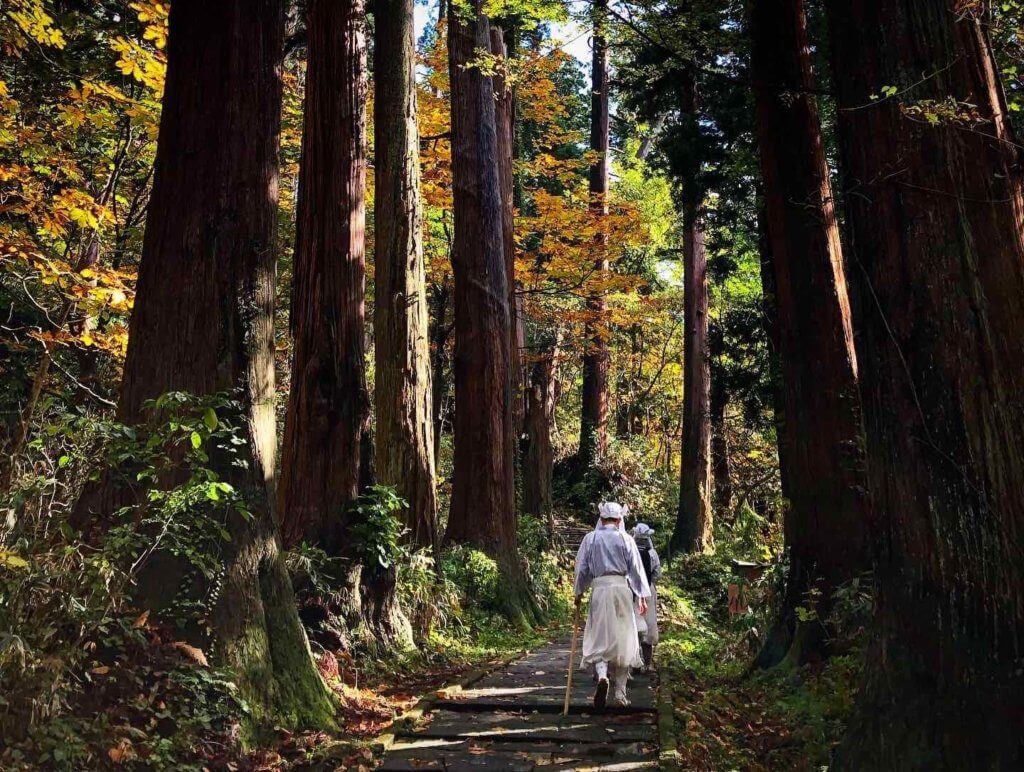
Yamabushi train on Mt. Haguro of the Dewa Sanzan 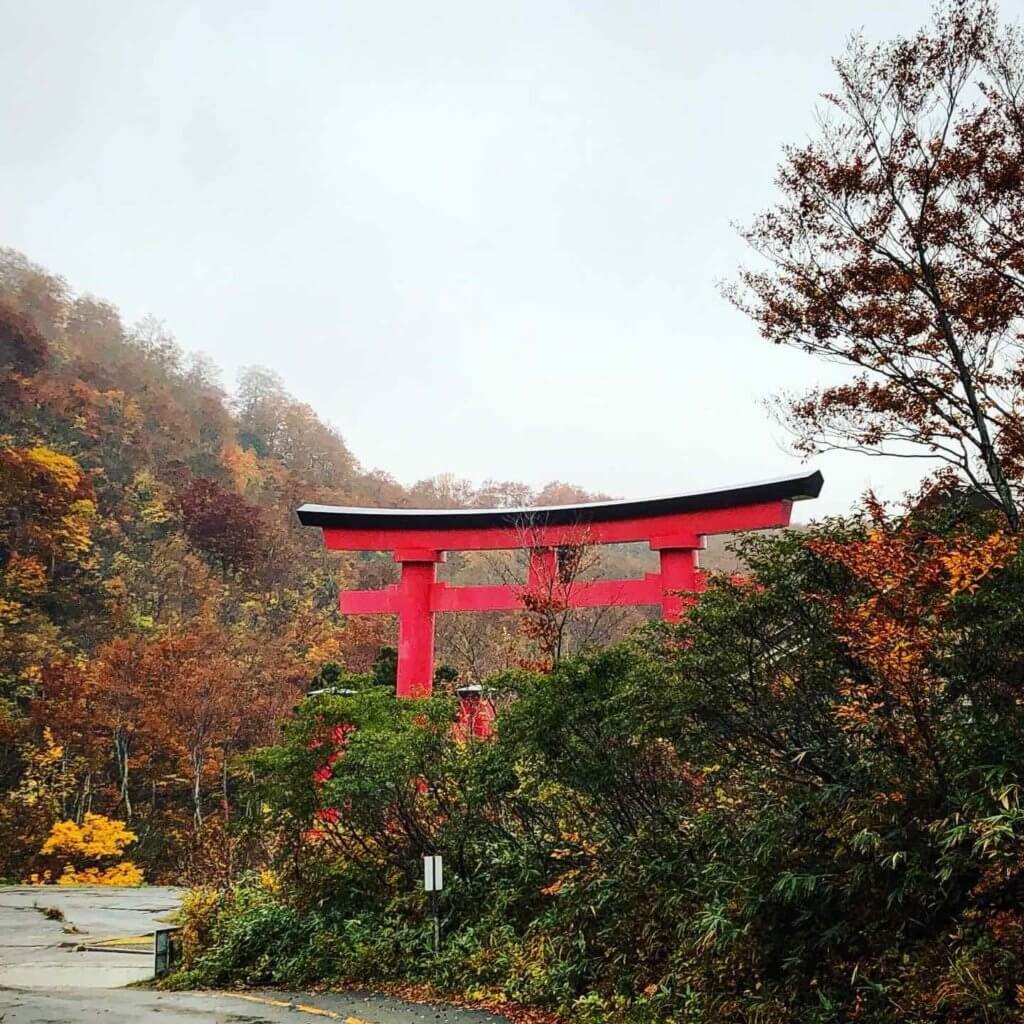
Mt. Yudono Shrine Gates in autumn. 
Sen'ninzawa on Mt. Yudono where Buddhist monks trained in the austerities on a mission to become Sokushinbutsu Living Buddha 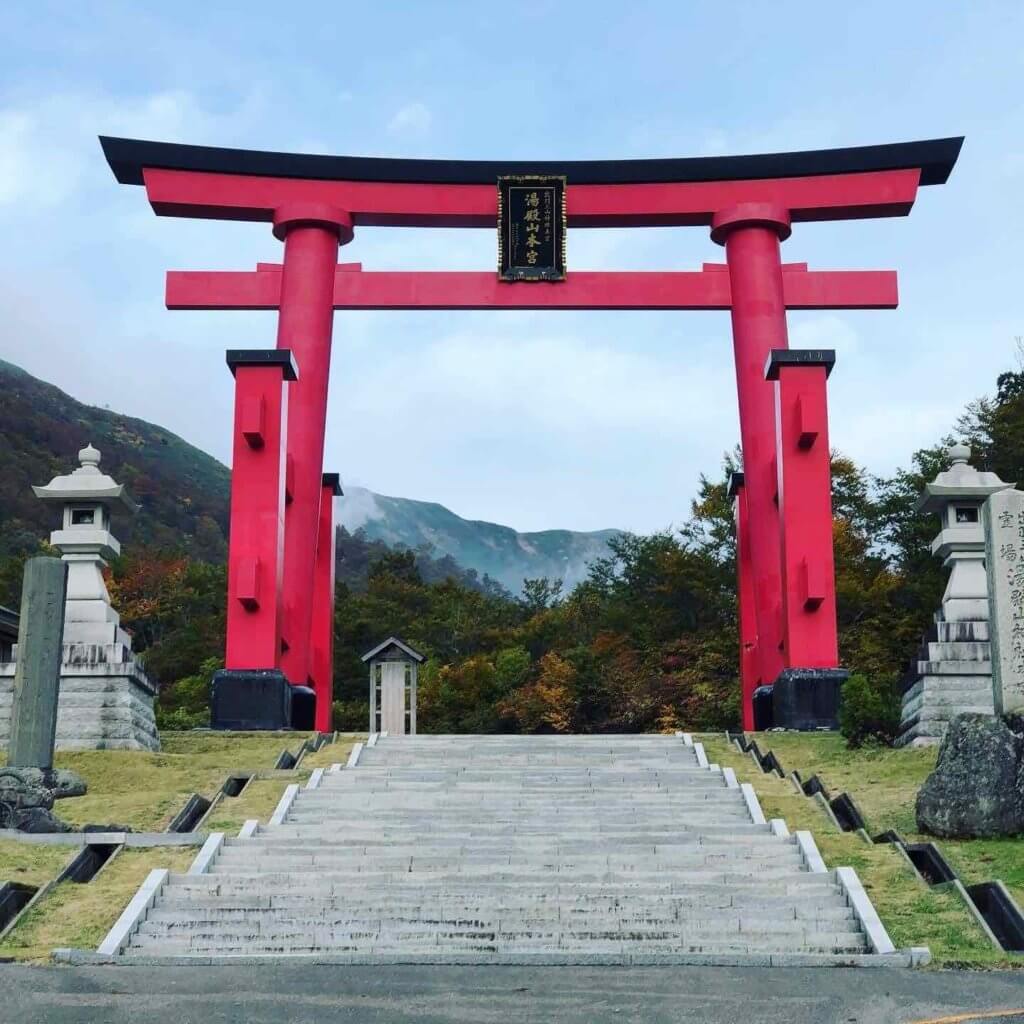
Mt. Yudono Shrine Gates in autumn. 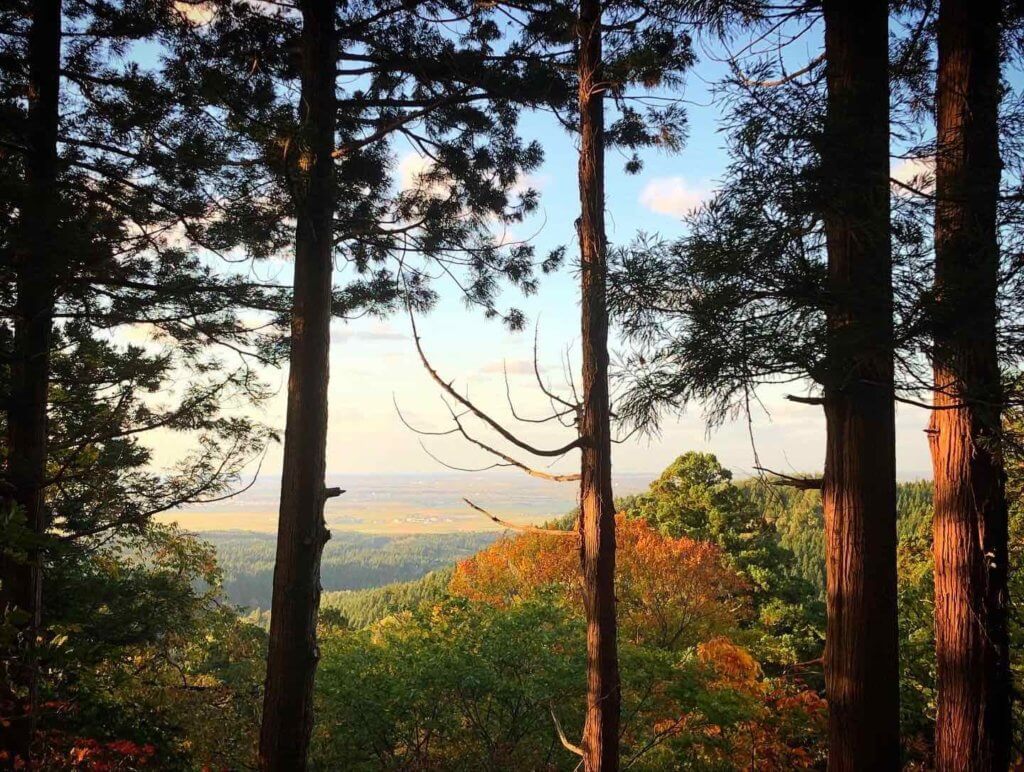
Mt. Haguro in autumn 
Mt. Haguro in autumn 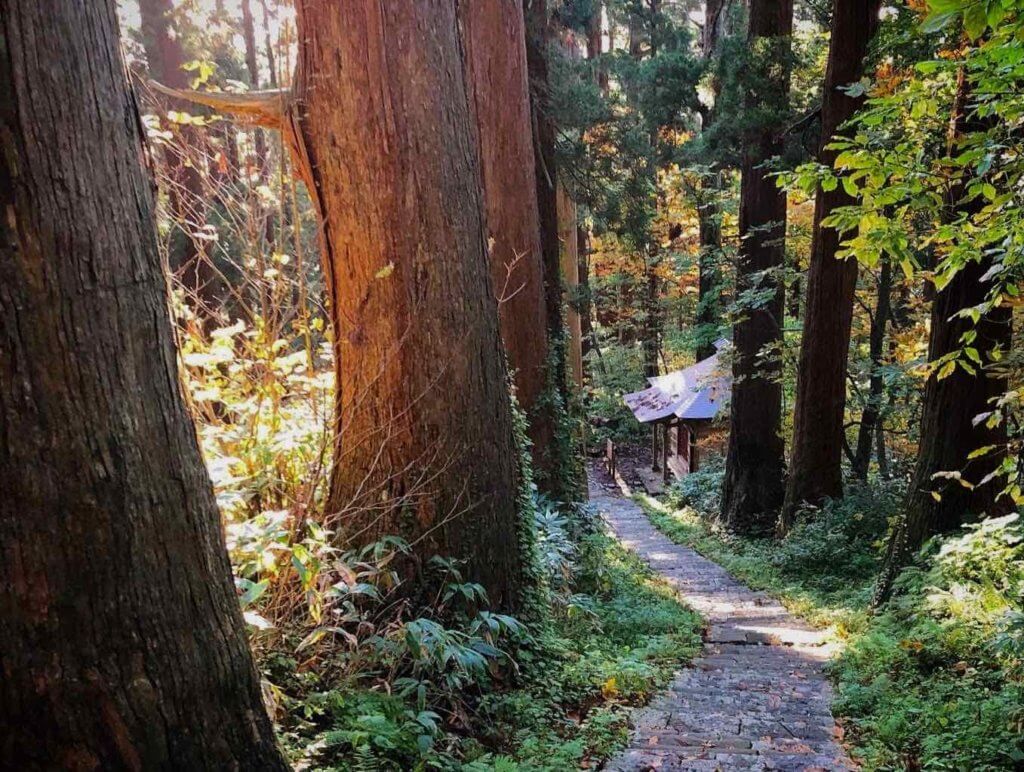
Mt. Haguro in autumn 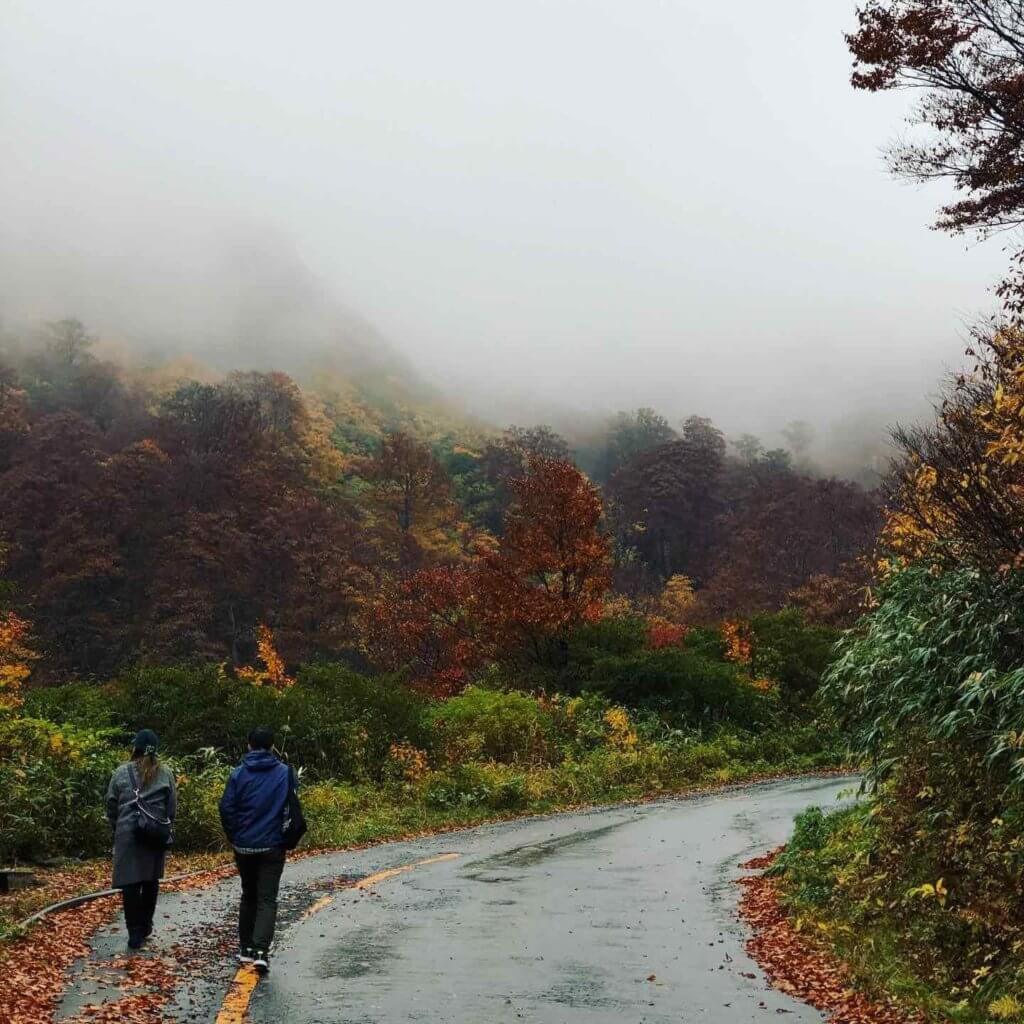
The path up to Mt. Yudono Shrine in autumn 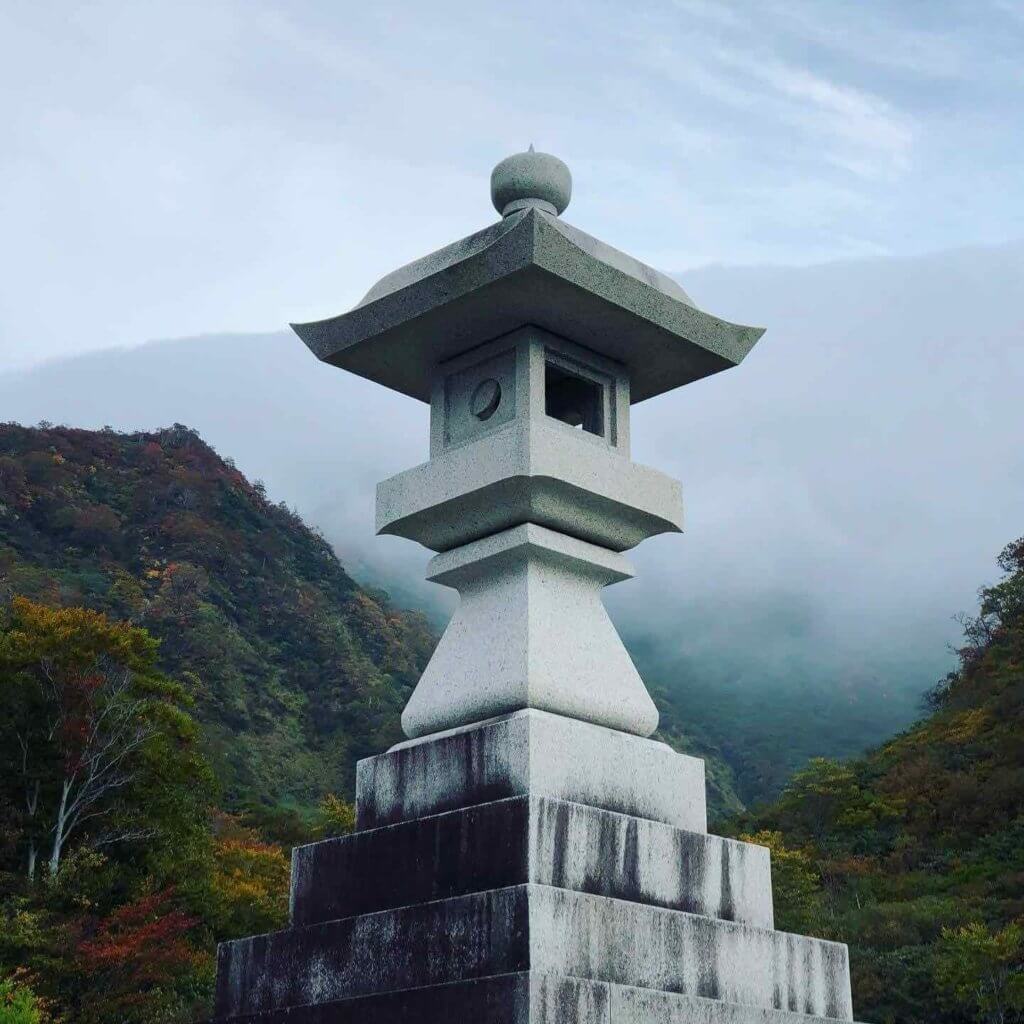
Mt. Yudono in autumn 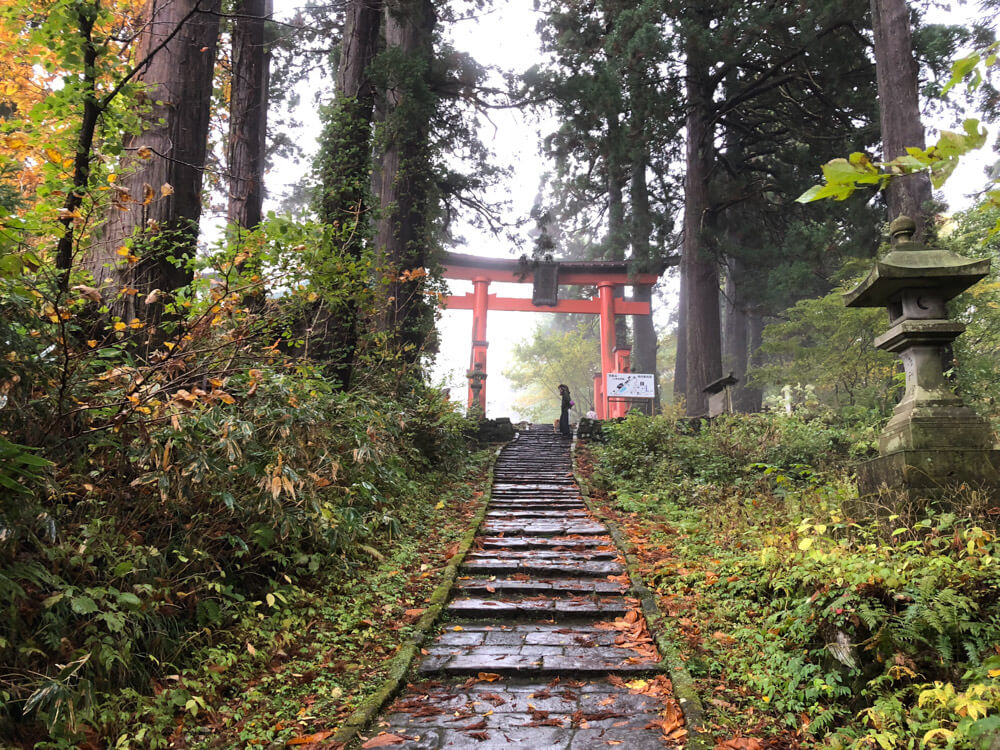
Saikan is located near the top of Mt. Haguro, right before the red Torii gates 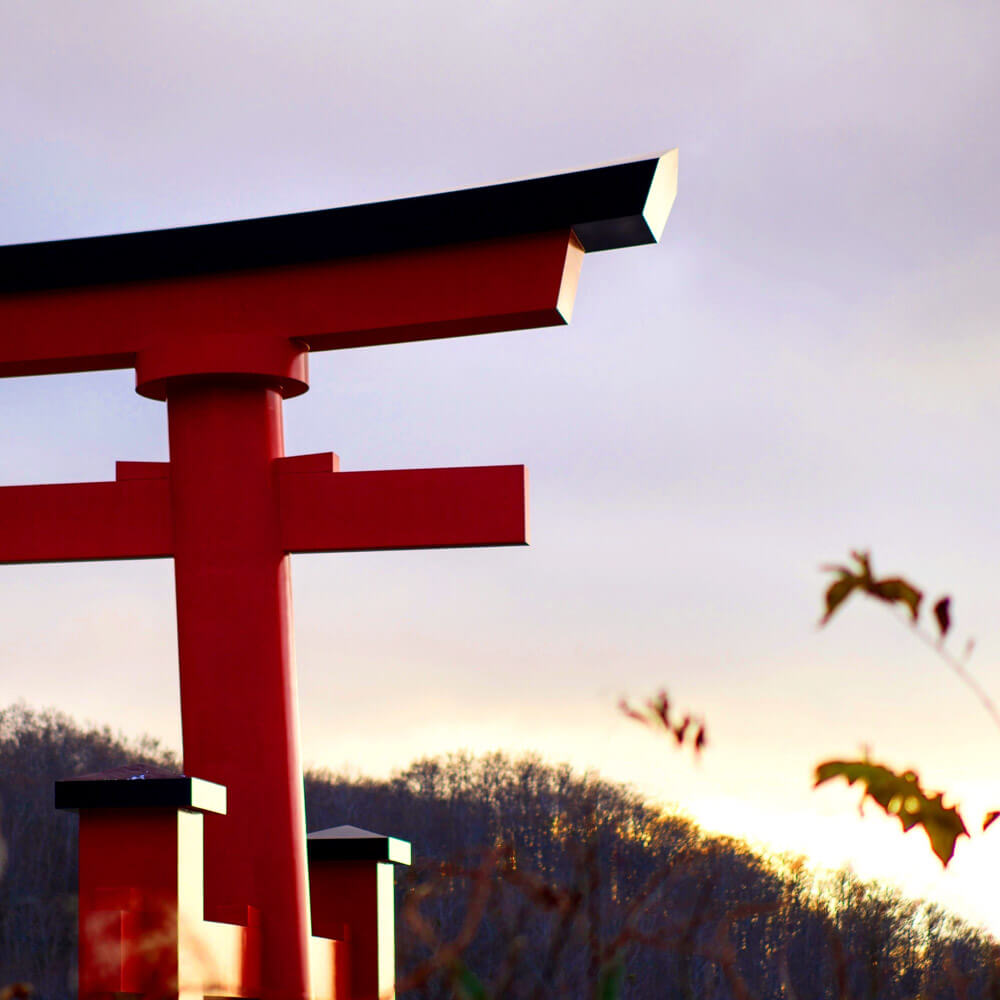
The Shrine Gates of Mt. Yudono of the Dewa Sanzan in Autumn 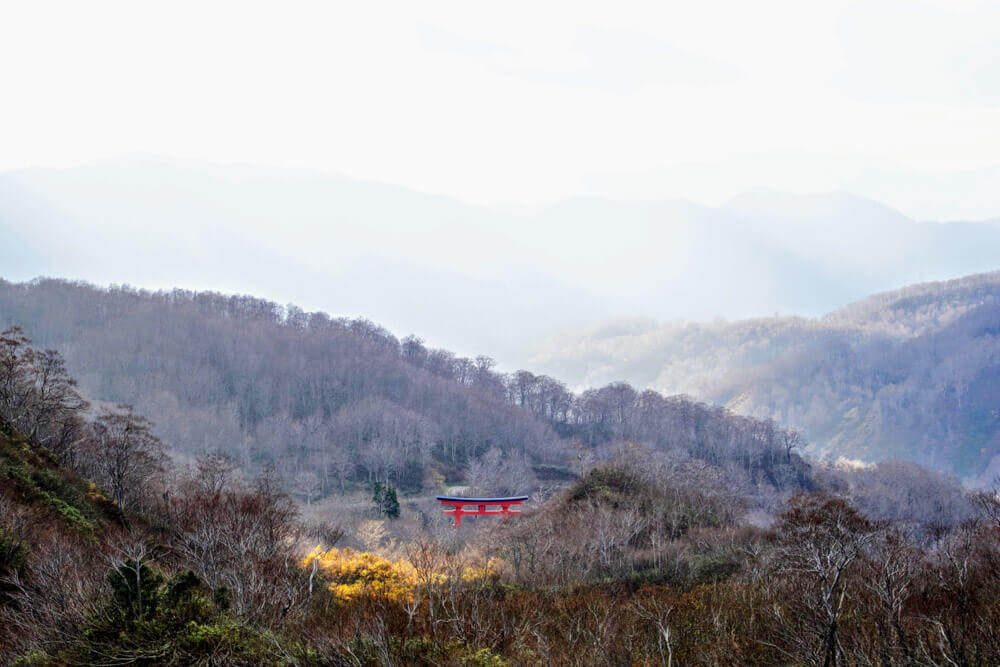
The Shrine Gates of Mt. Yudono of the Dewa Sanzan in Autumn 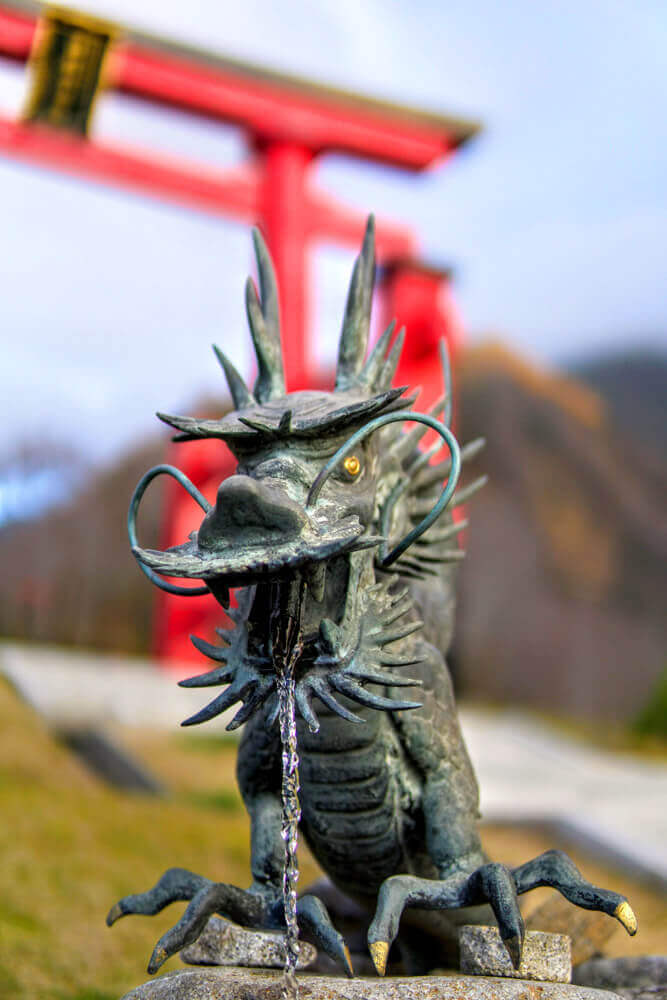
A dragon in front of The Shrine Gates of Mt. Yudono of the Dewa Sanzan in Autumn 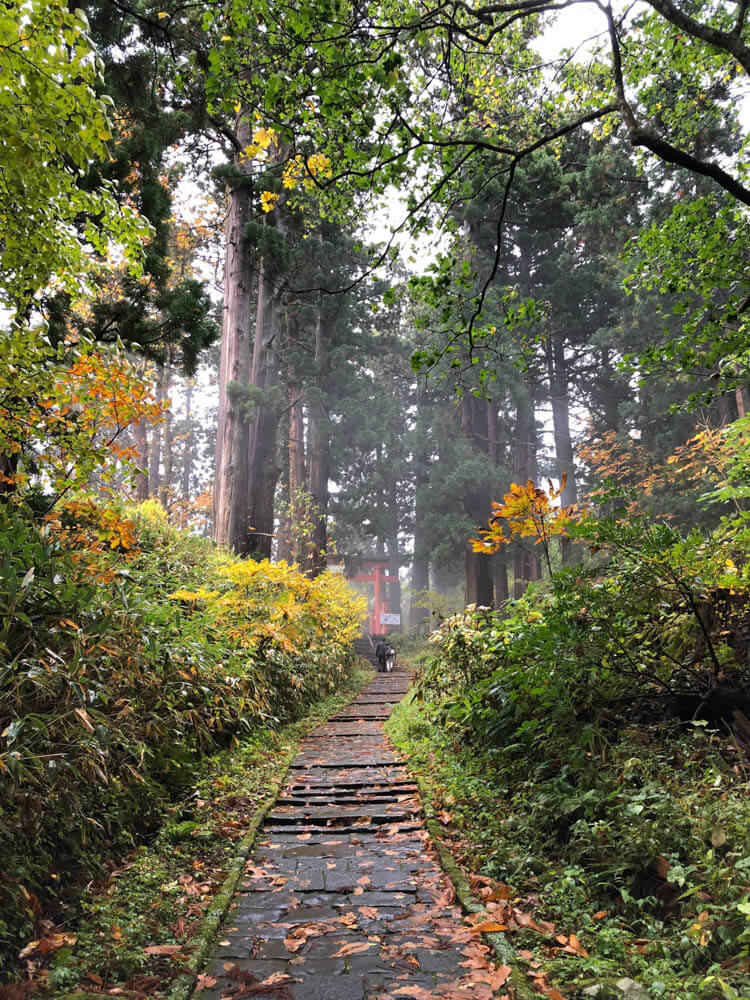
Torii Shrine gate and Stone Steps up Mt. Haguro of the Dewa Sanzan that Matsuo Basho would have climbed 
Sanjingosaiden Shrine and the Kagami'ike Mirror Pond at the top of Mt. Haguro of the Dewa Sanzan in Autumn 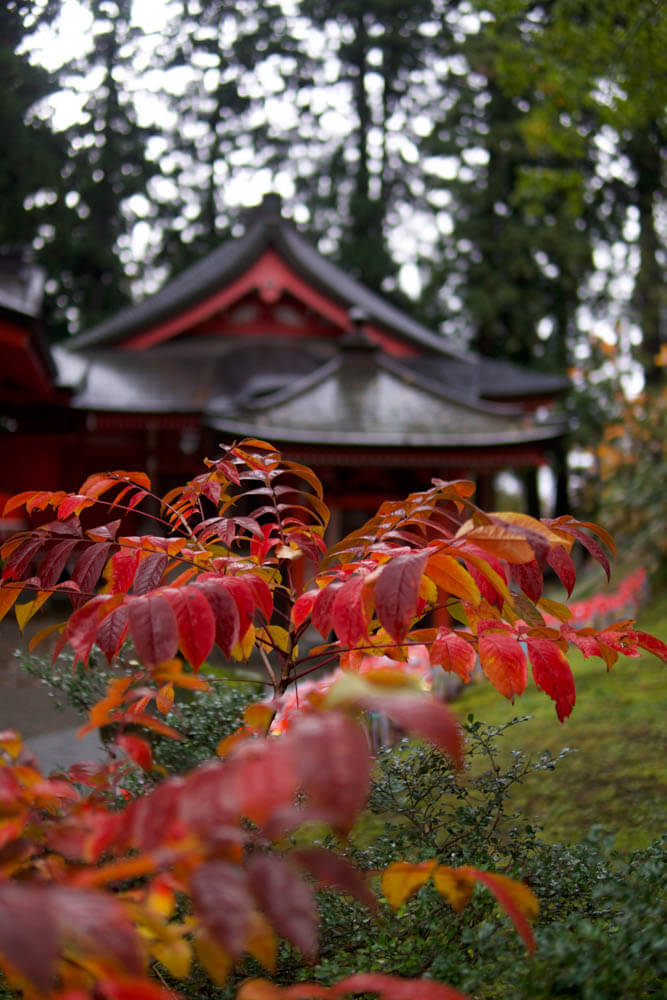
Reisaiden Shrine at the top of Mt. Haguro where the Dewa Sanzan Festival of Flowers takes place 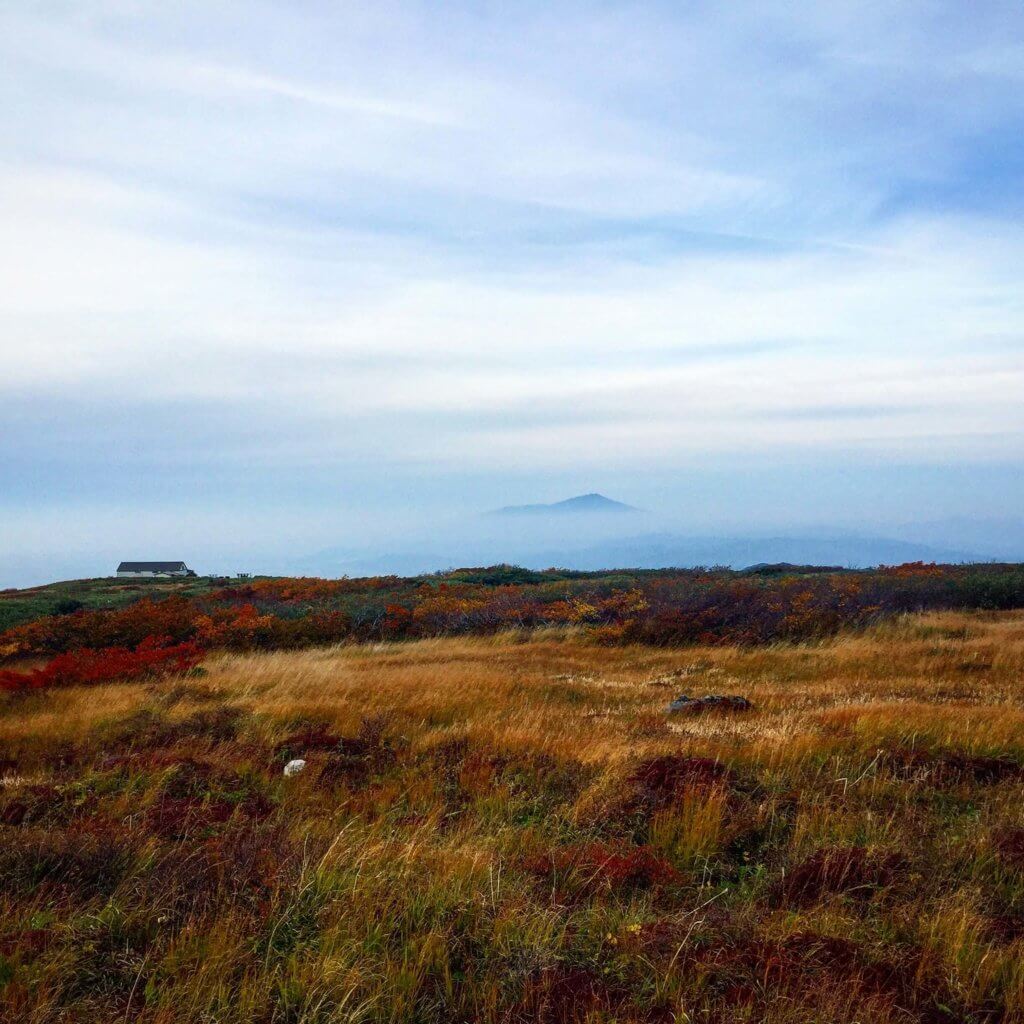
Mt. Chokai seen from Mt. Gassan of the Dewa Sanzan in autumn 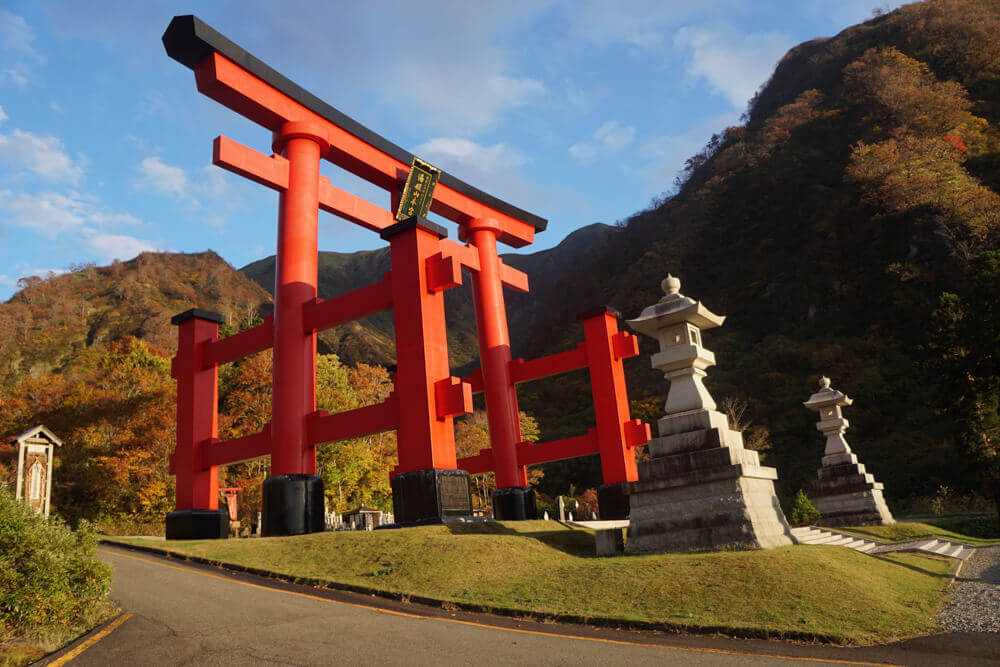
The Shrine Gates of Mt. Yudono of the Dewa Sanzan in the autumn 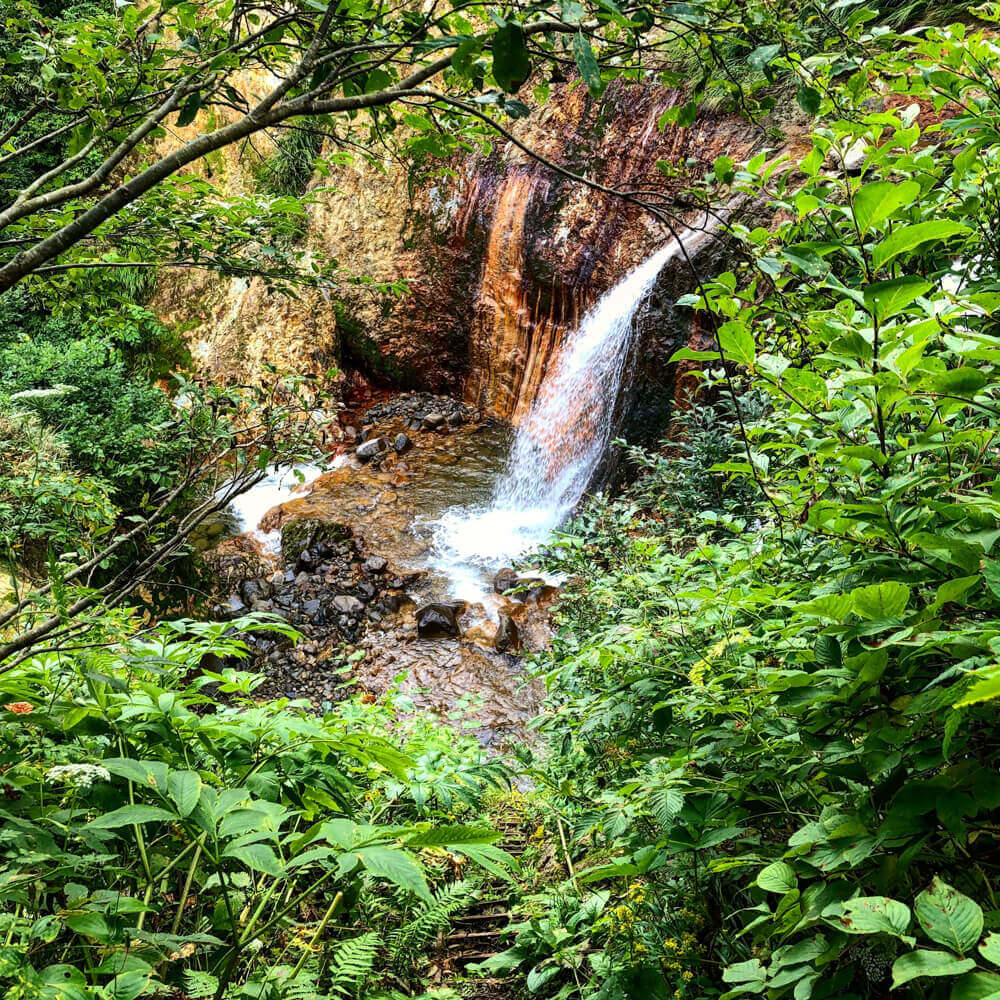
Objects of nature, such as Otaki Waterfall on Mt. Yudono have been revered since ancient times in Japan. 
River on Mt. Yudono during autumn 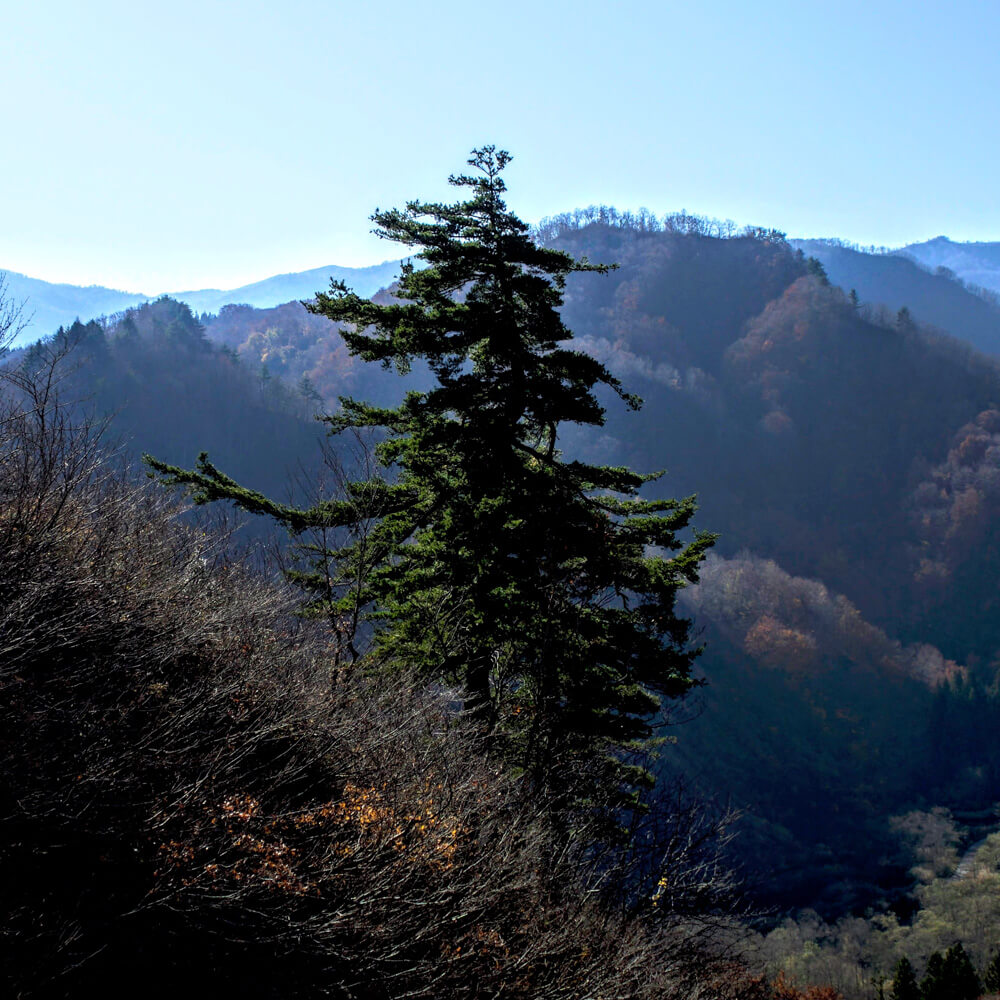
A tall tree stands before Mt. Gassan of the Dewa Sanzan 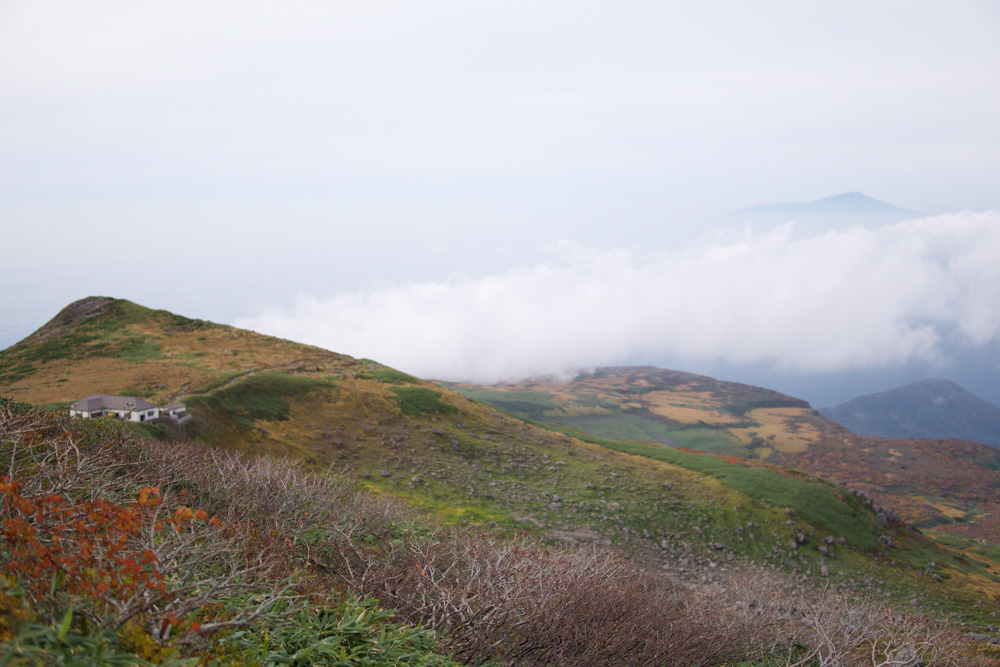
Mt. Gassan of the Dewa Sanzan in autumn 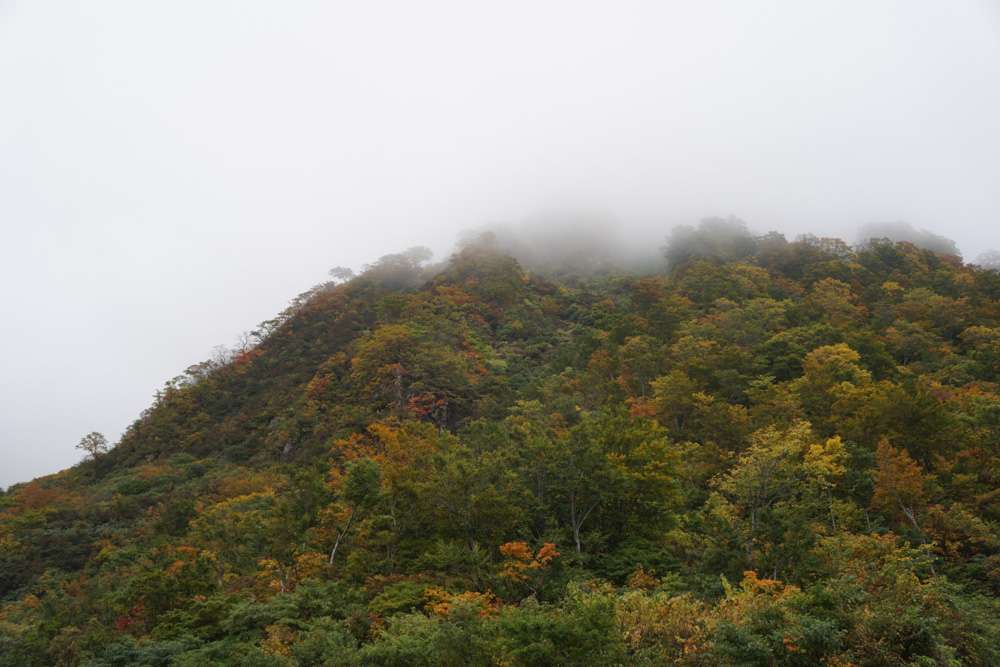
The autumn leaves in the fog of Mt. Yudono 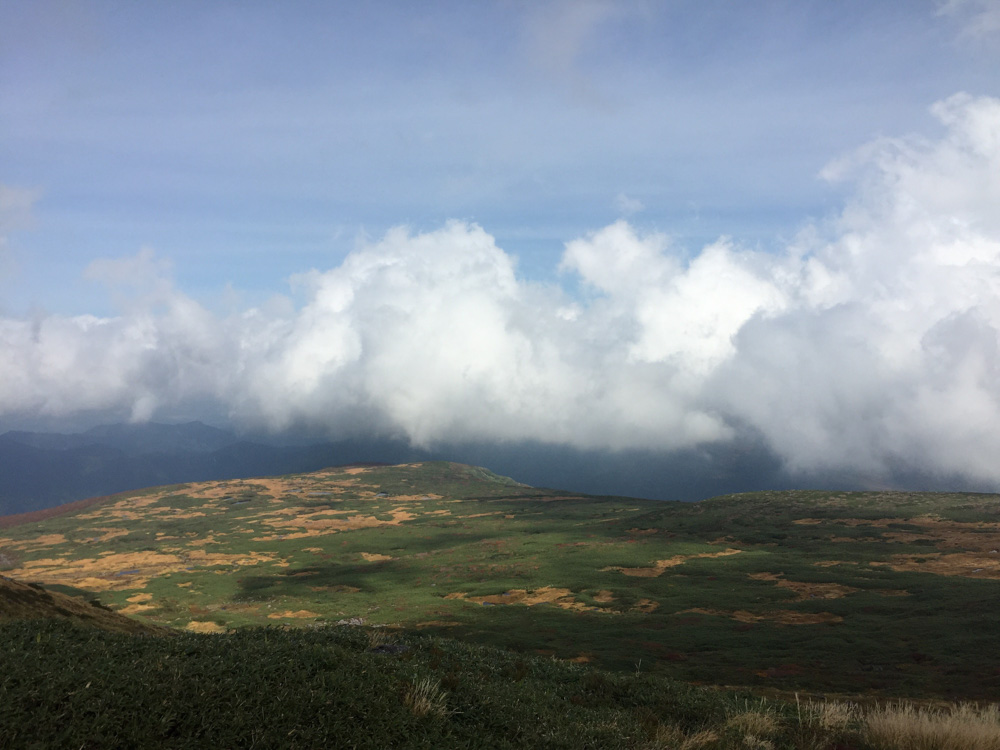
Mt. Gassan of the Dewa Sanzan 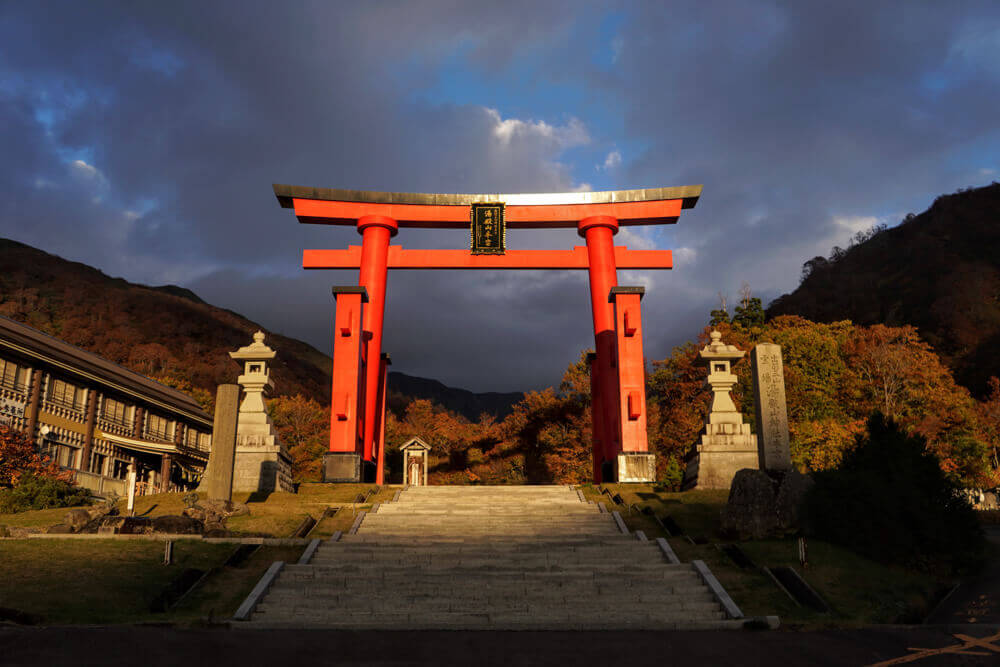
The Shrine Gates of Mt. Yudono of the Dewa Sanzan in the autumn
Timothy Bunting
Tim Bunting is a Dewa Sanzan Shrine Yamabushi with over 10 years' experience living beneath the three mystical peaks. He is a self-professed Dewa Sanzan nerd, and is currently working on the Yamabushido project and Dewa Sanzan Monzenmachi Project with Megurun Inc. His roles including assisting in Yamabushi trainings, translating, interpreting, and curating Dewasanzan.com.
Insider information and updates on
The Dewa Sanzan.
Subscribe to the Dewa Sanzan Tribe now.

